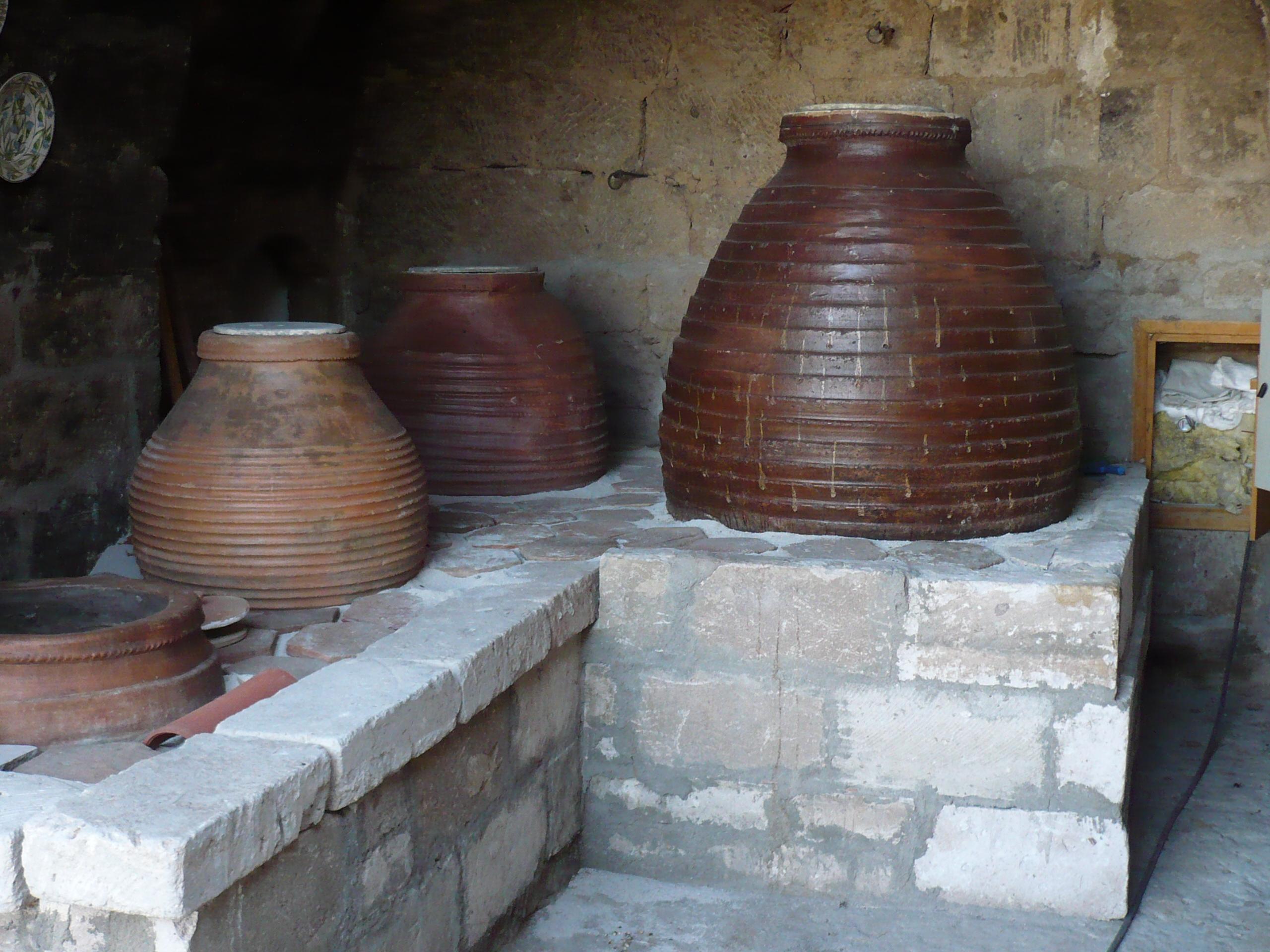Adventure Amphore (Küp)
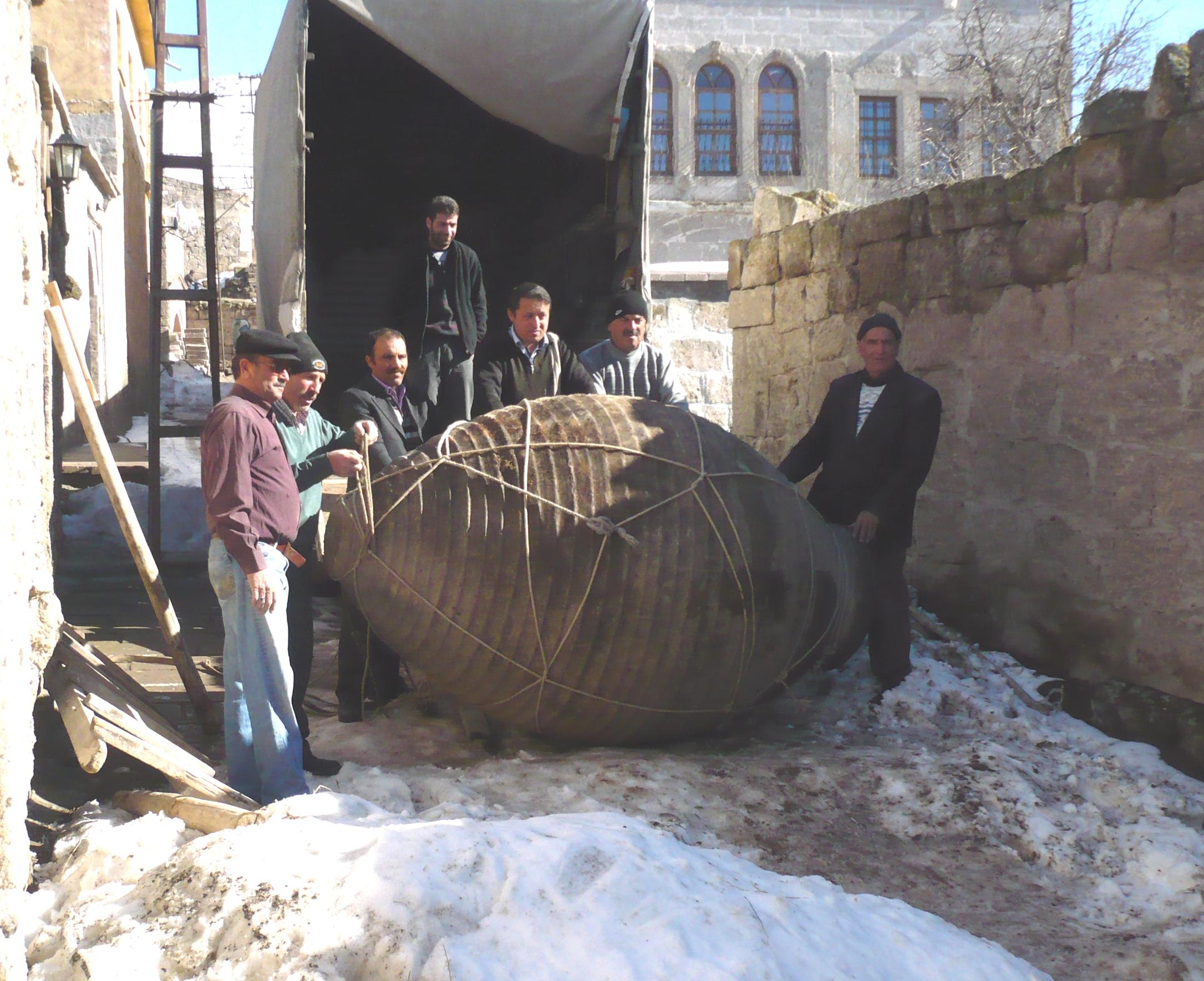
MACERA KÜP (amfora)
Güzelyurt, 20 Ocak 2013
Anadolu’da kil kaplara “küp” adı verilir. Terim muhtemelen İngilizce “cup” veya Almanca “Kübel” kelimesiyle ilgilidir. Geçmişte büyük küpler su, zeytinyağı, şarap veya pekmez depolamak için kullanılırdı. Bugün Türkiye’de sadece birkaç büyük küp yapılıyor. Normalde 150 – 250 l, 500 – 1000 l kapasiteye sahiptirler.
Bu modern küpler biraz daha ince duvarlıdır ve bu nedenle oldukça hassastır.
Güzelyurt/Kapadokya’daki geleneksel şarap üretimimiz için kaliteli eski küpleri aramaya devam ediyorum. Bizans ve erken Osmanlı küpleri kalın duvarlı ve sağlamdır. Şarap üretimi sırasında ayakta durabilirler ve toprağa gömülmelerine gerek yoktur. Ancak bu küpler nadir hale geldi ve artık ucuz değiller.
Bir kış günü telefonda bana böyle eski bir küp teklif edildiğinde, ertesi gece Tokat’a giden otobüse binmekte tereddüt etmedim. Sivas yaylasının karlı, fırtınalı ve buzlu yollarında bir gece yolculuğuydu.
Tokat’ta Hasan Bey tarafından karşılandım. Yakındaki Üzümlü köyündeki özel bir bahçede büyük bir küp (üzüm = üzüm) keşfetmişti. Köyün eski adı Dimorta idi. Nüfus 1924 yılına kadar Rum’du. Küp, kısmen toprağa gömülmüş bir bahçe kulübesinin gölgesinin altında dinleniyordu. Başlangıçta şarap depolamak için, son zamanlarda ise su depolamak için kullanılıyordu. Artık evin ve bahçenin etrafı duvarlarla çevrilmişti.
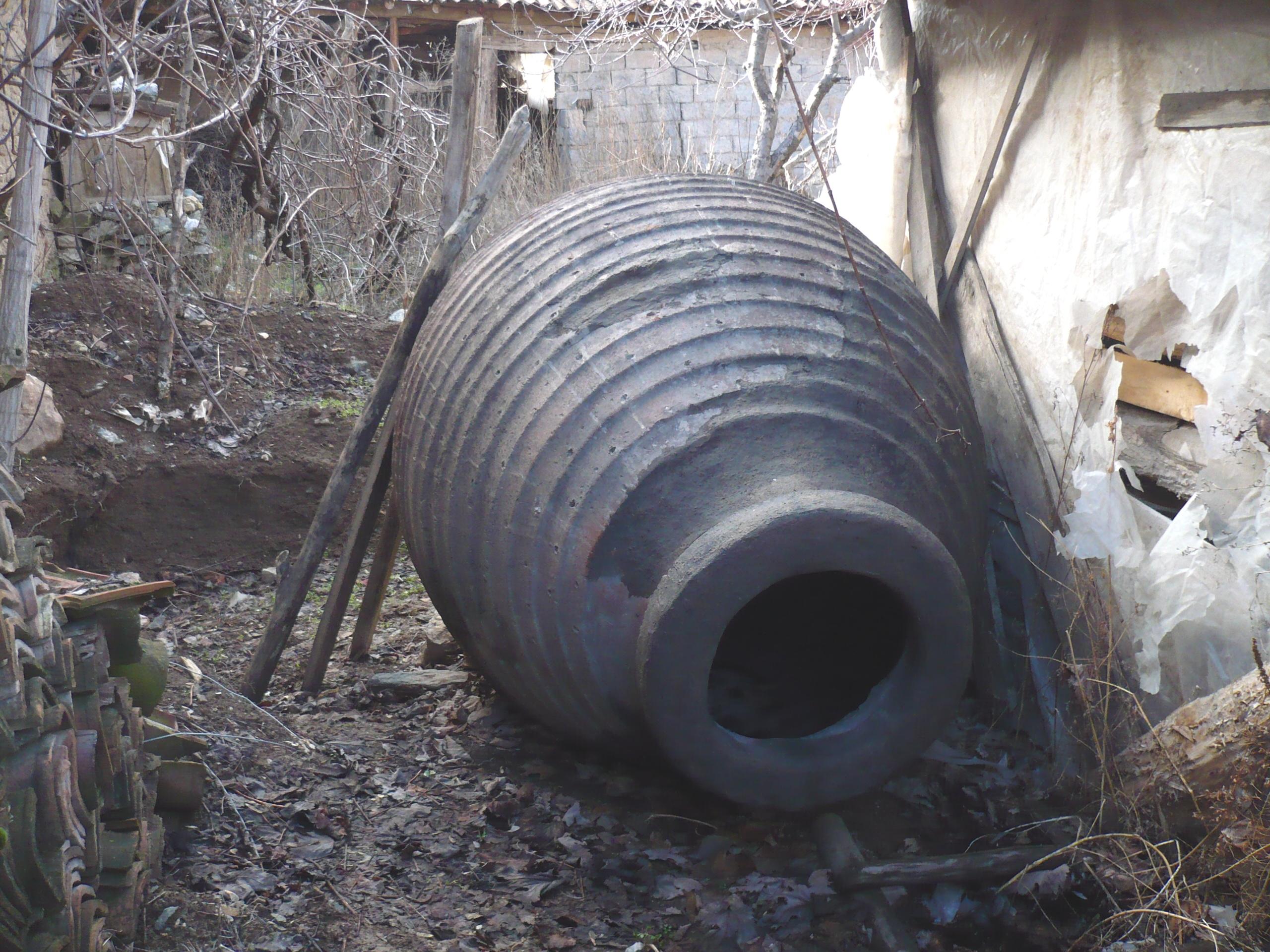
Uzun tartışmalardan sonra nihayet anlaşma sağlanınca Hasan Bey, nakliye için yardım ve uygun araç arayışına girdi. Araması akşama kadar, yardımcılar bahçe duvarını yıkmaya başlayıncaya kadar sürdü.
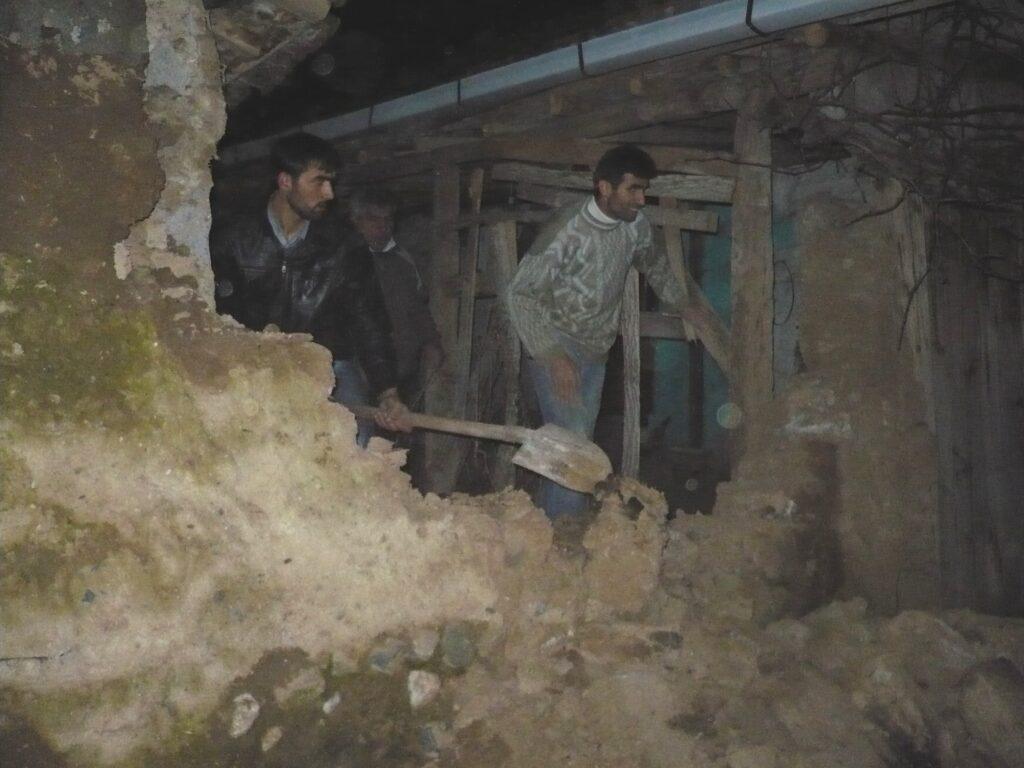
Bunu yaptıktan sonra, 2,50 m yüksekliğindeki küpü yavaş yavaş bahçeden dışarı, çalıların ve taşların üzerinden duvardaki delikten sokağa yuvarladılar ve bu işlem yaklaşık bir saat sürdü.
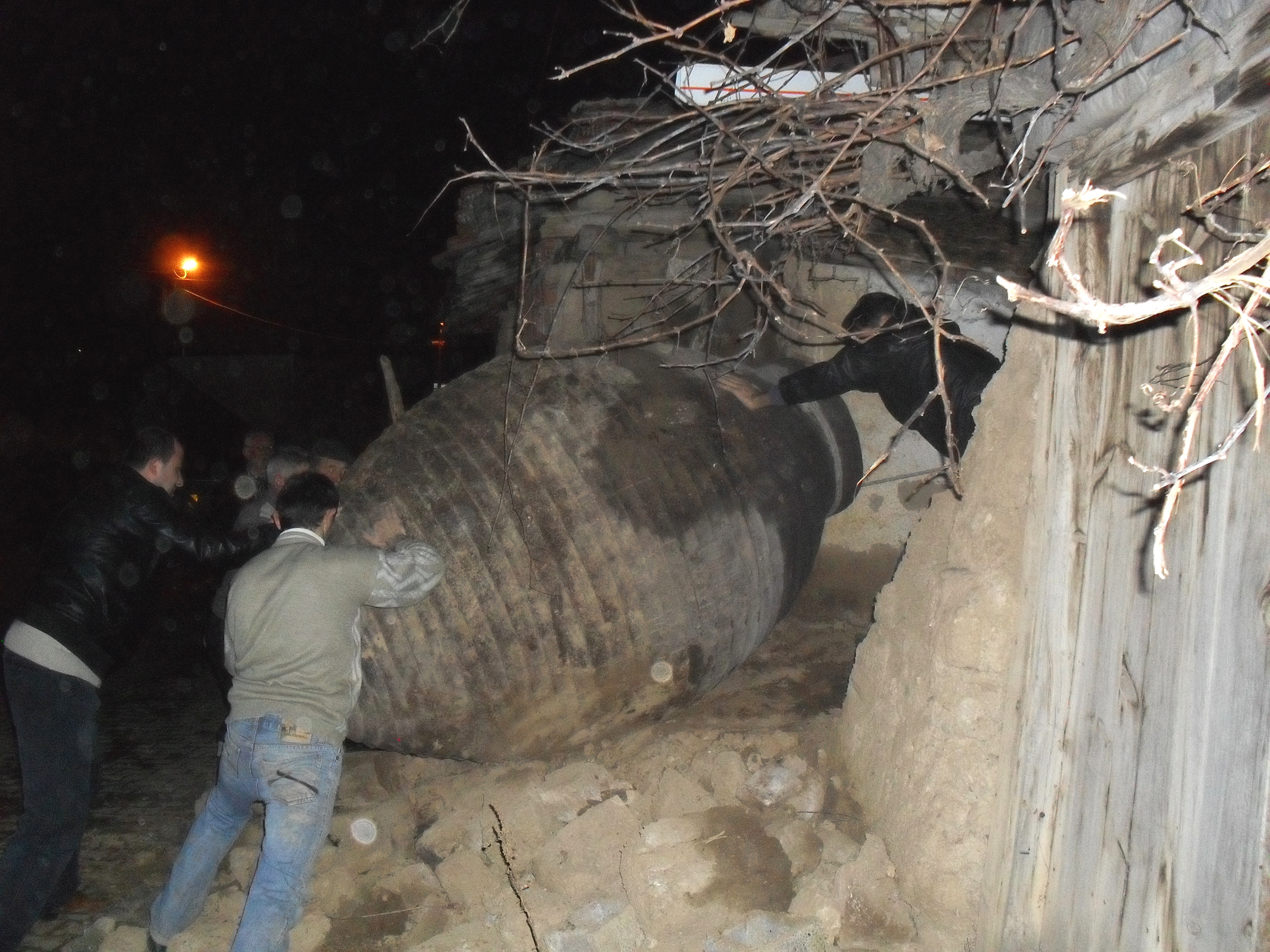
Evin birkaç metre uzağında bir kamyon yokuşta bekliyordu çünkü buradan küpü kamyon kasasına yüklemek daha kolay olacaktı. Manevra bir saatten biraz fazla sürdü ama sonunda küp yüklendi ve bağlandı.
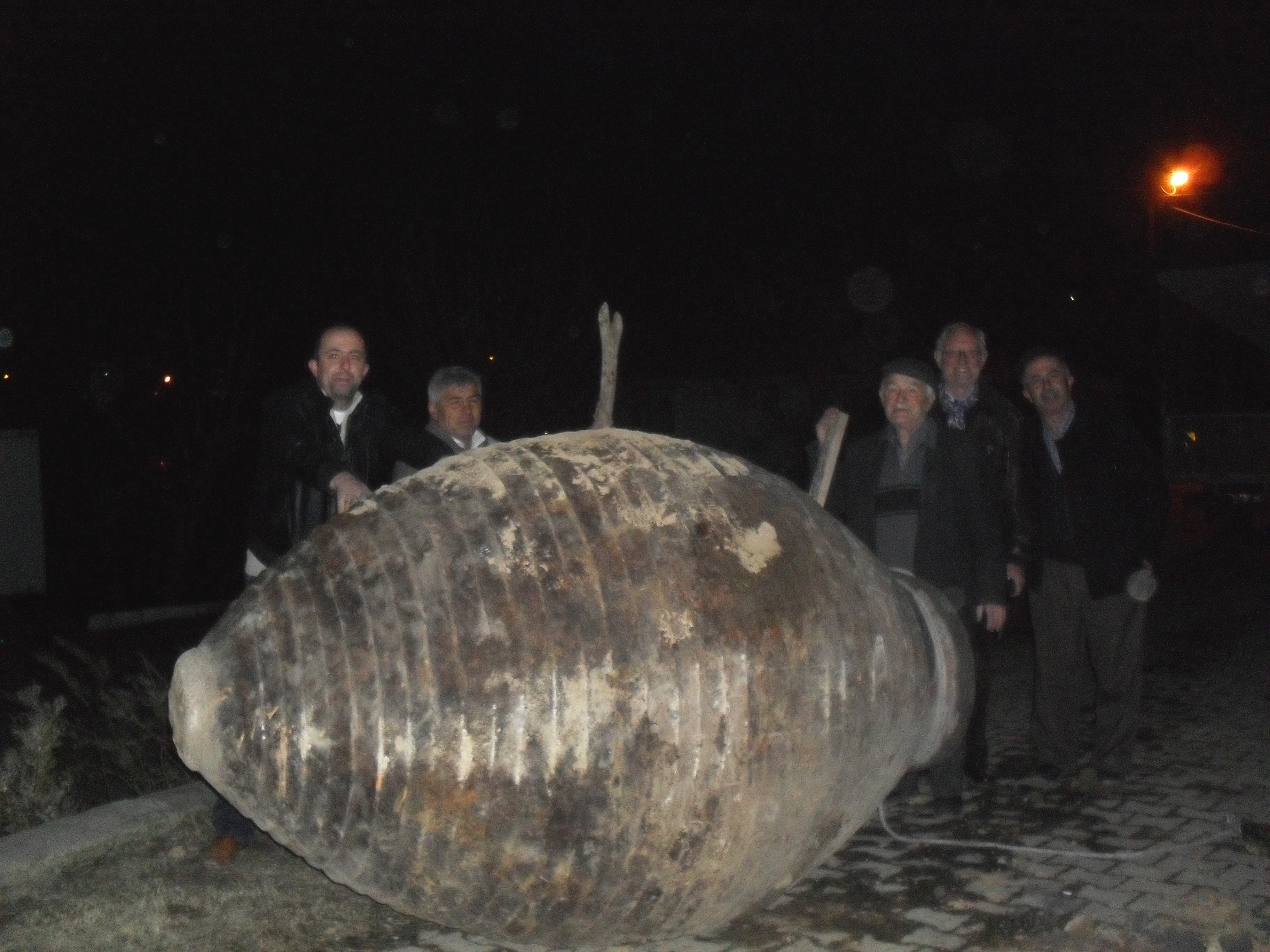
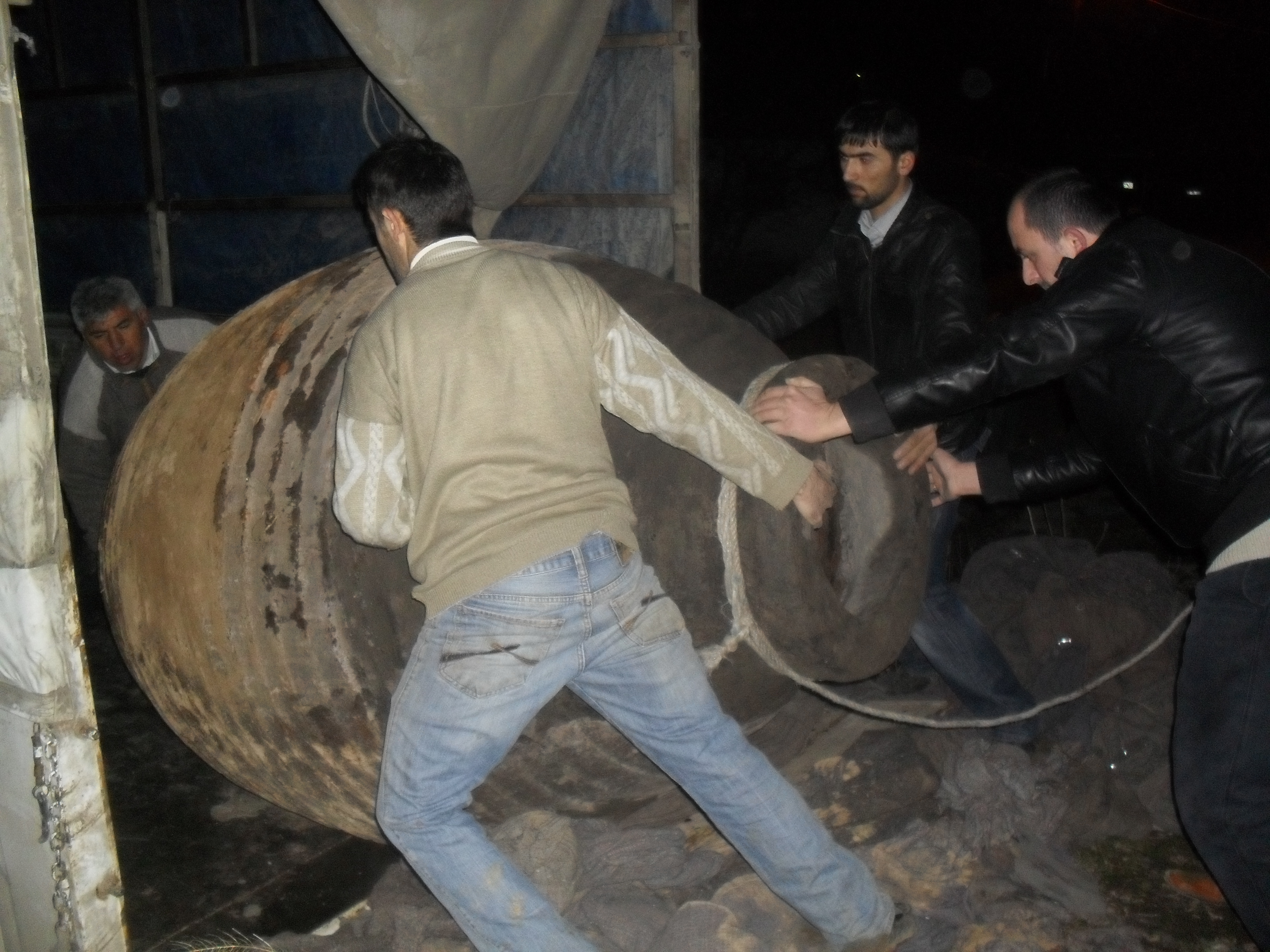
Şoför Murat Erzurumluydu. Kısmen inşaat halinde olan, kar ve buzla kaplı, kısmen inşaat halindeki son derece fakir köy yollarında gece yolculuğu bana sıradan geliyordu ama on saatlik bir yolculuktan sonra nihayet Güzelyurt’a vardığımızda direksiyon başında hemen uykuya daldı.
Pazartesi Güzelyurt’ta pazar günüdür. Çevre köylerden çok sayıda insan kentte. Yani küpü boşaltacak altı adam bulmak benim için oldukça kolay oldu.
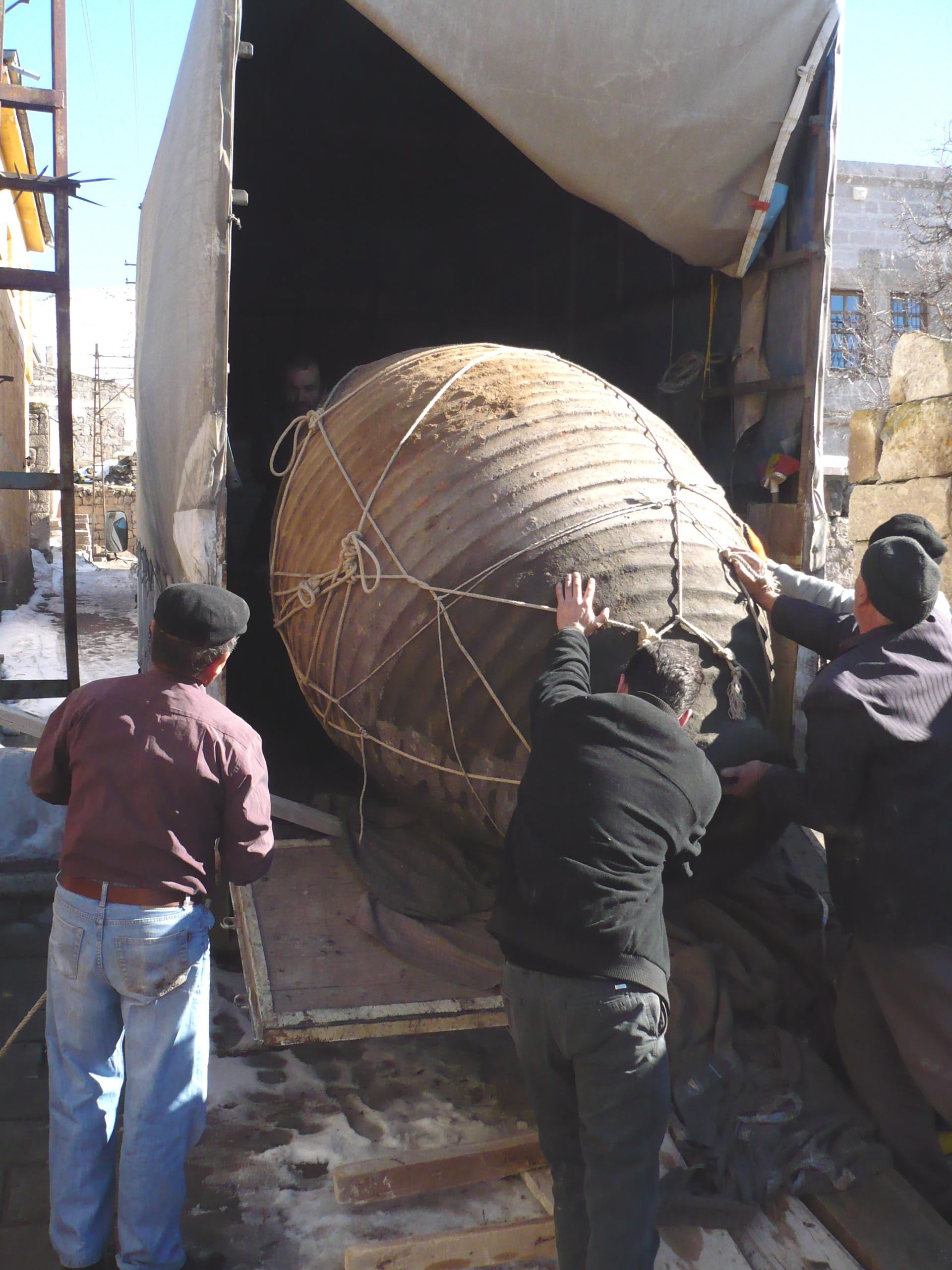
“Gelveri İmalathanesi” şehrin sadece küçük dar sokaklarının bulunduğu eski kesiminde yer almaktadır. Boşaltma sırasında kalın bir kar tabakası işe yaradı ama sonra işler çok daha zorlaştı.
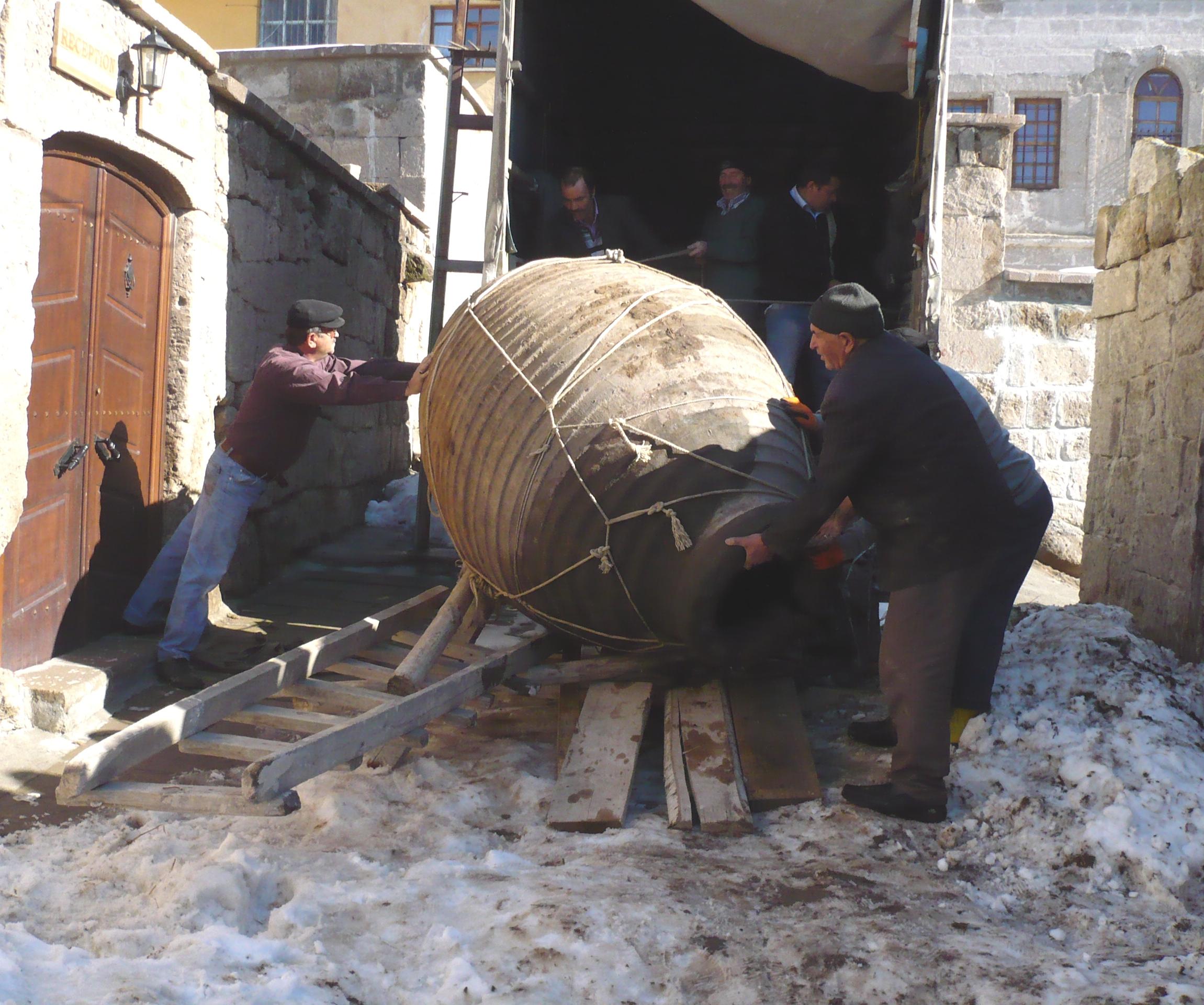
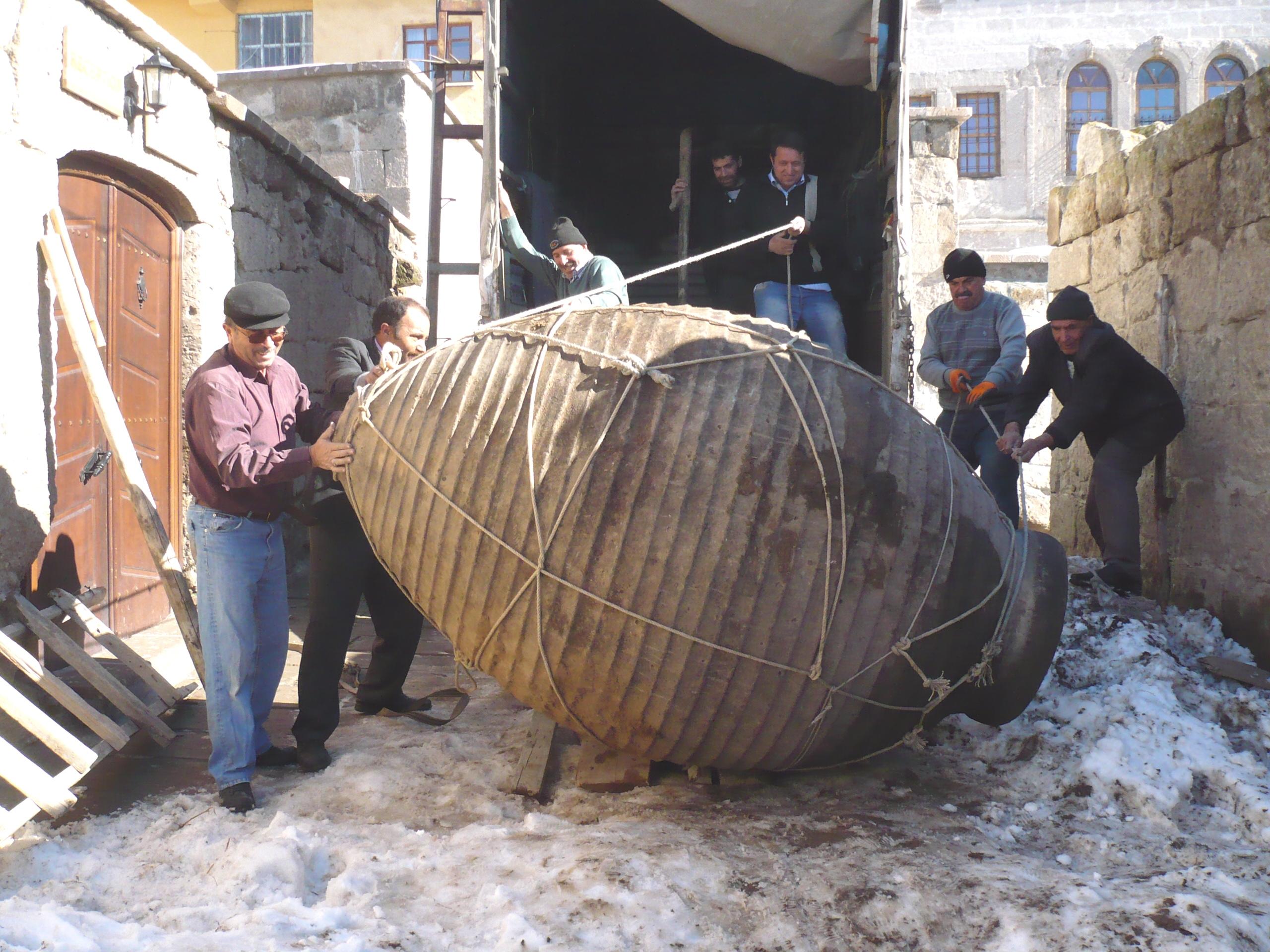

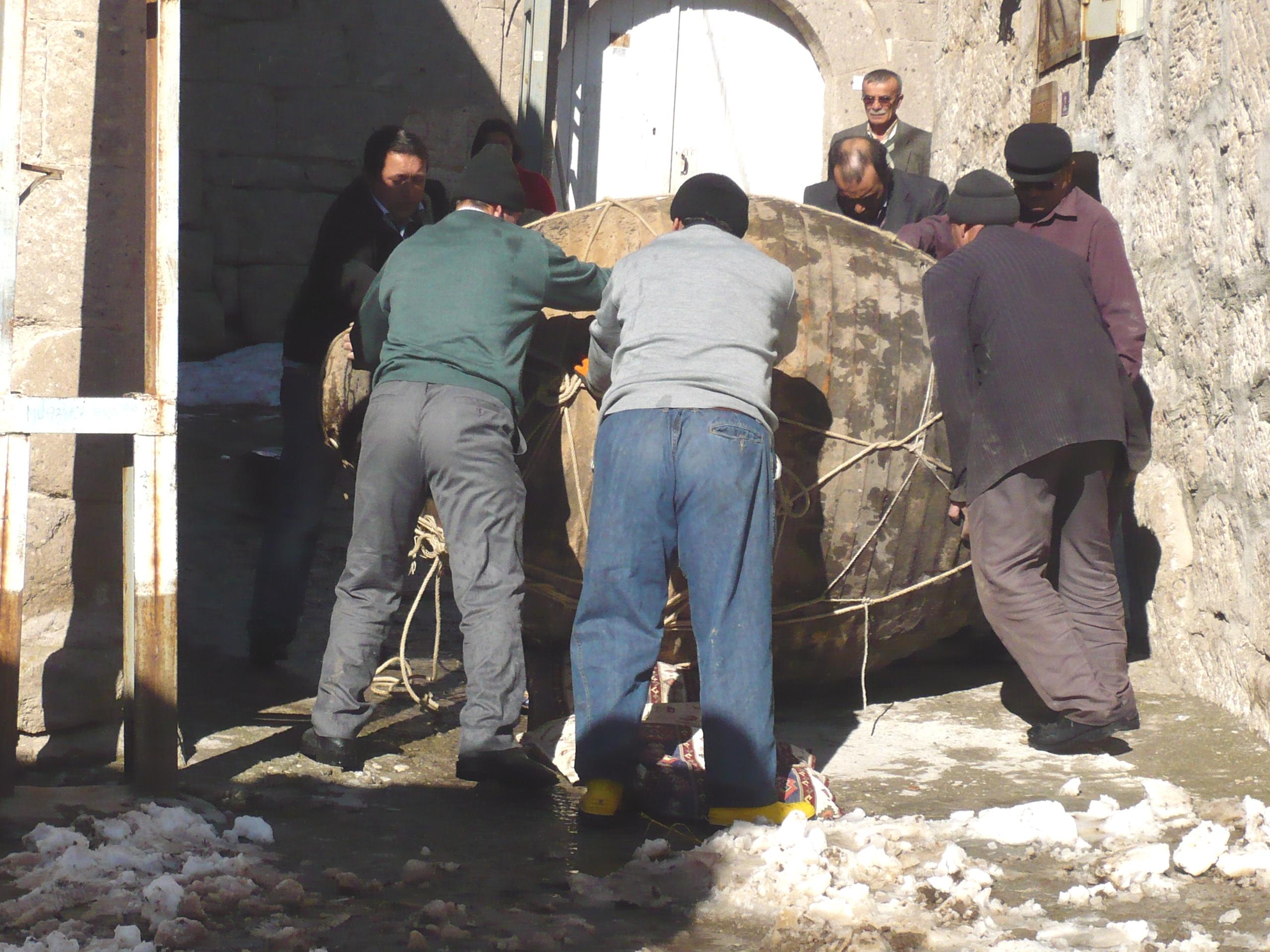
Küpü minderlerin ve ahşap kalasların üzerinden yavaş yavaş evimize doğru yuvarladık.
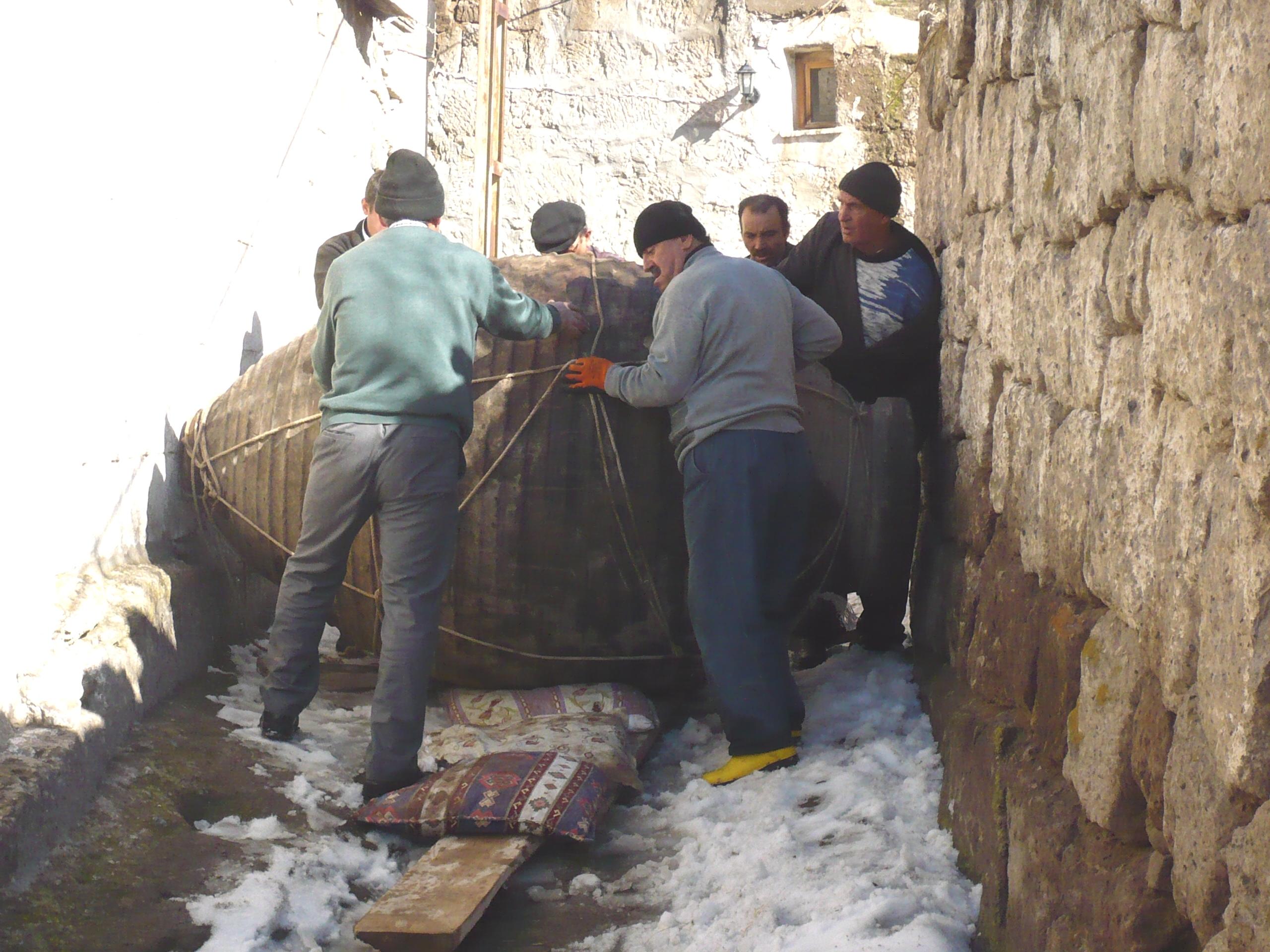
Ancak yarı yolda şerit yalnızca 2,50 m genişliğindedir. Küpü daha fazla yuvarlamak imkansızdı. Karaya oturmuş bir balina gibi sürüklenmesi gerekiyordu. Hafifçe sağa sola sallanarak, çekerek ve iterek santimetre santimetre idare ediyoruz.
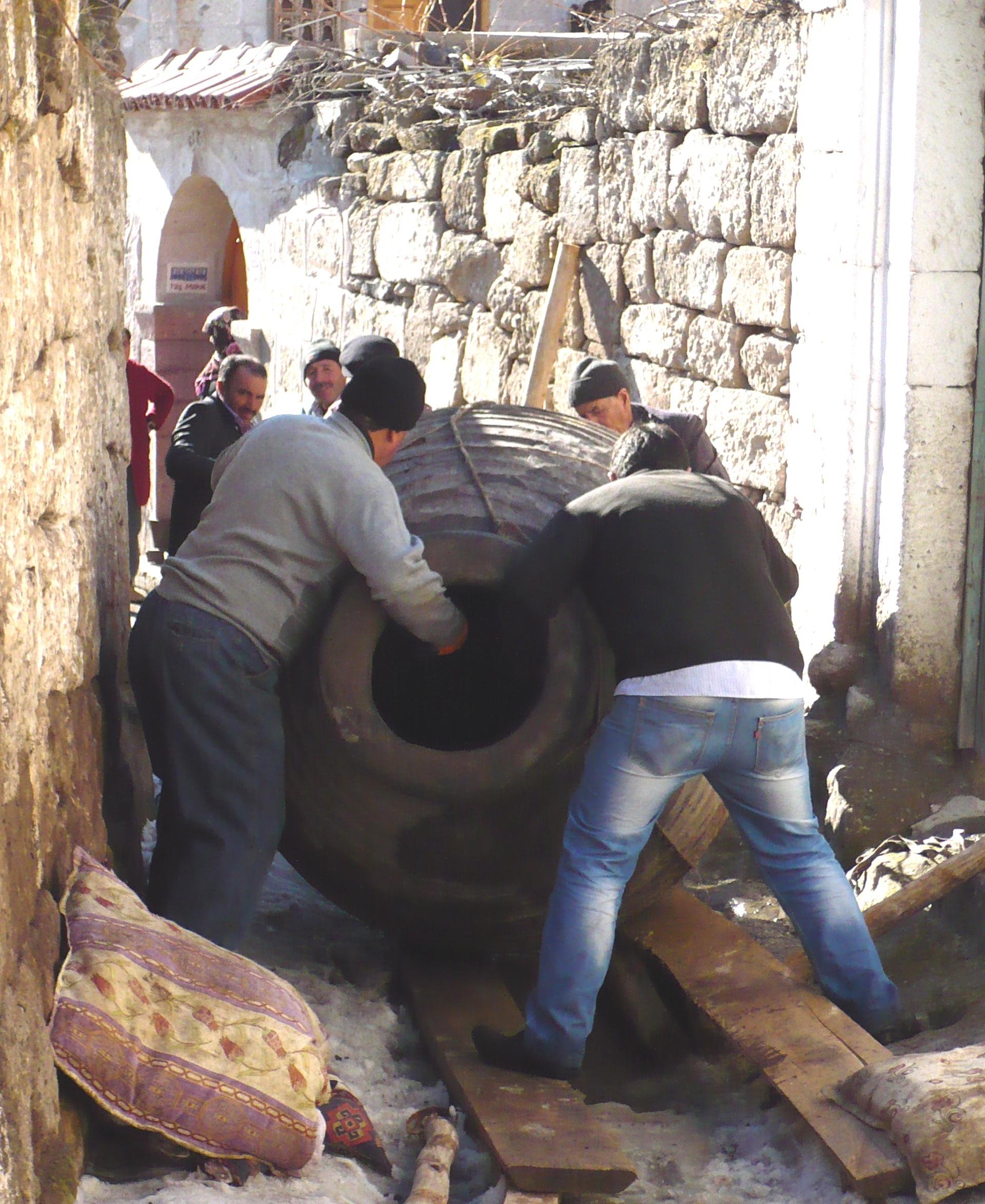
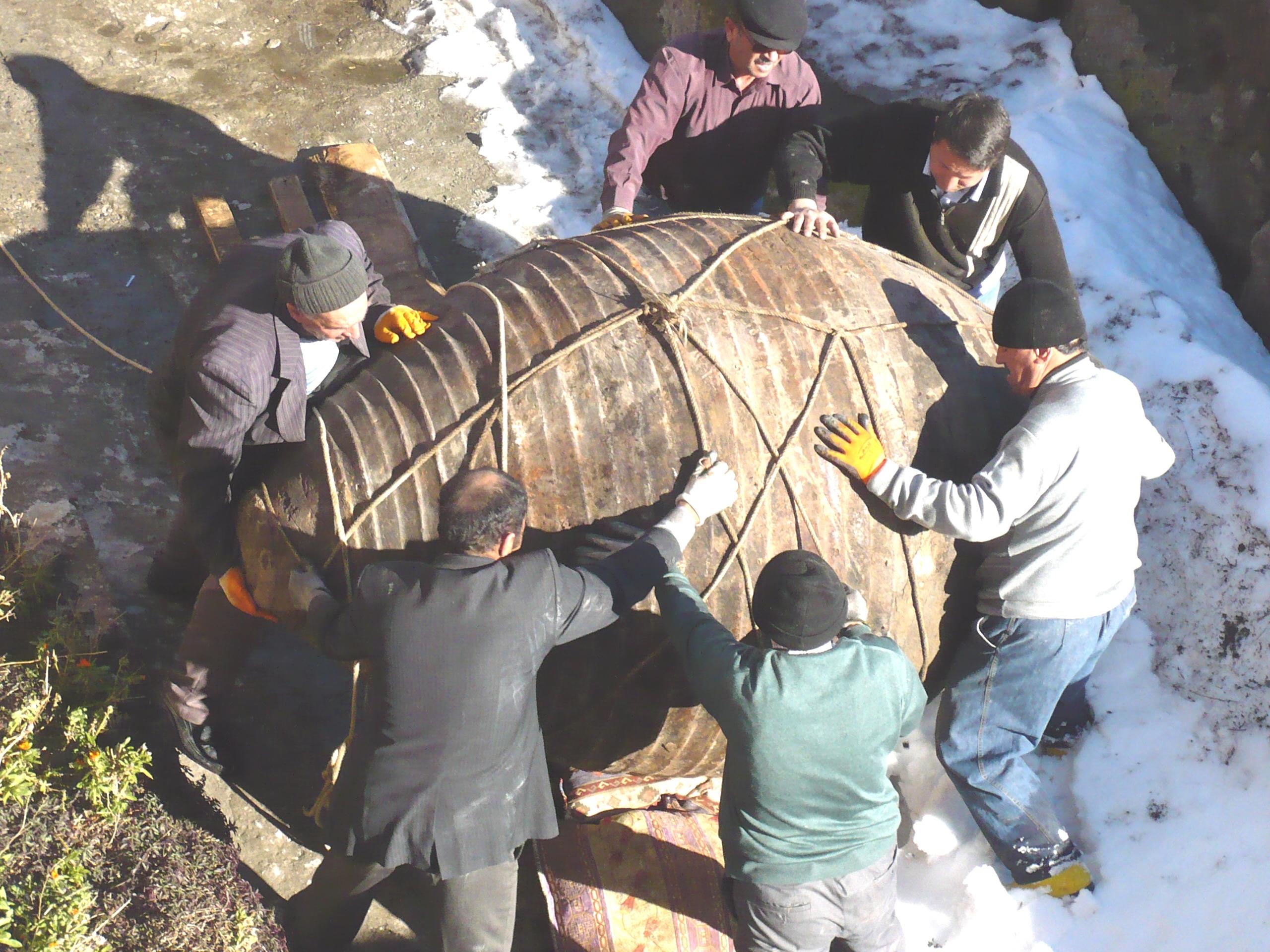
Sonraki adımların koordine edilmesi gerektiğinde, altı kişiden her biri en uygun yaklaşım konusunda farklı görüşlere sahipti. Bu nedenle, karar verme süreci sürekli olarak görevin gerçek aşamasından daha uzun sürüyordu.
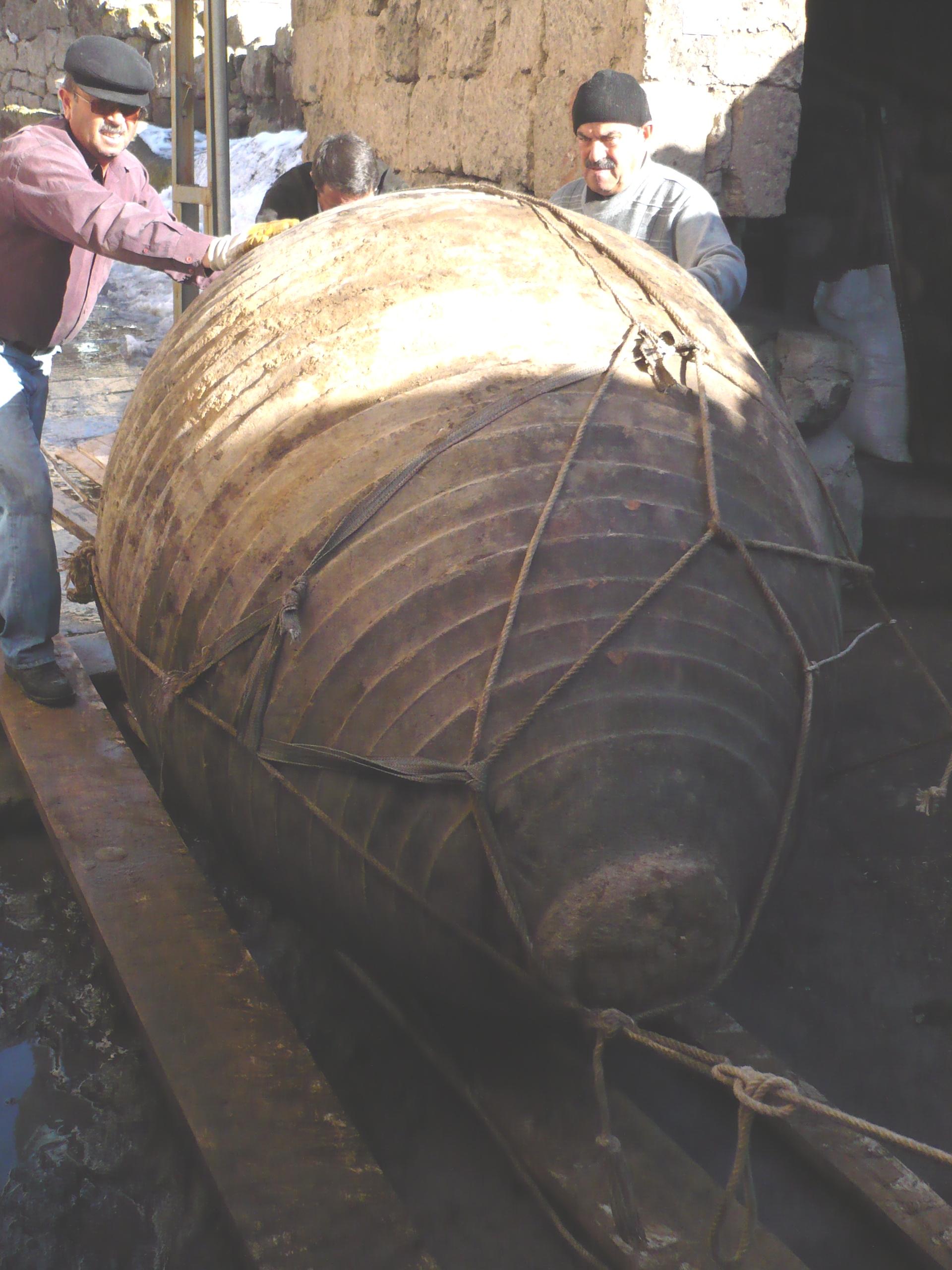
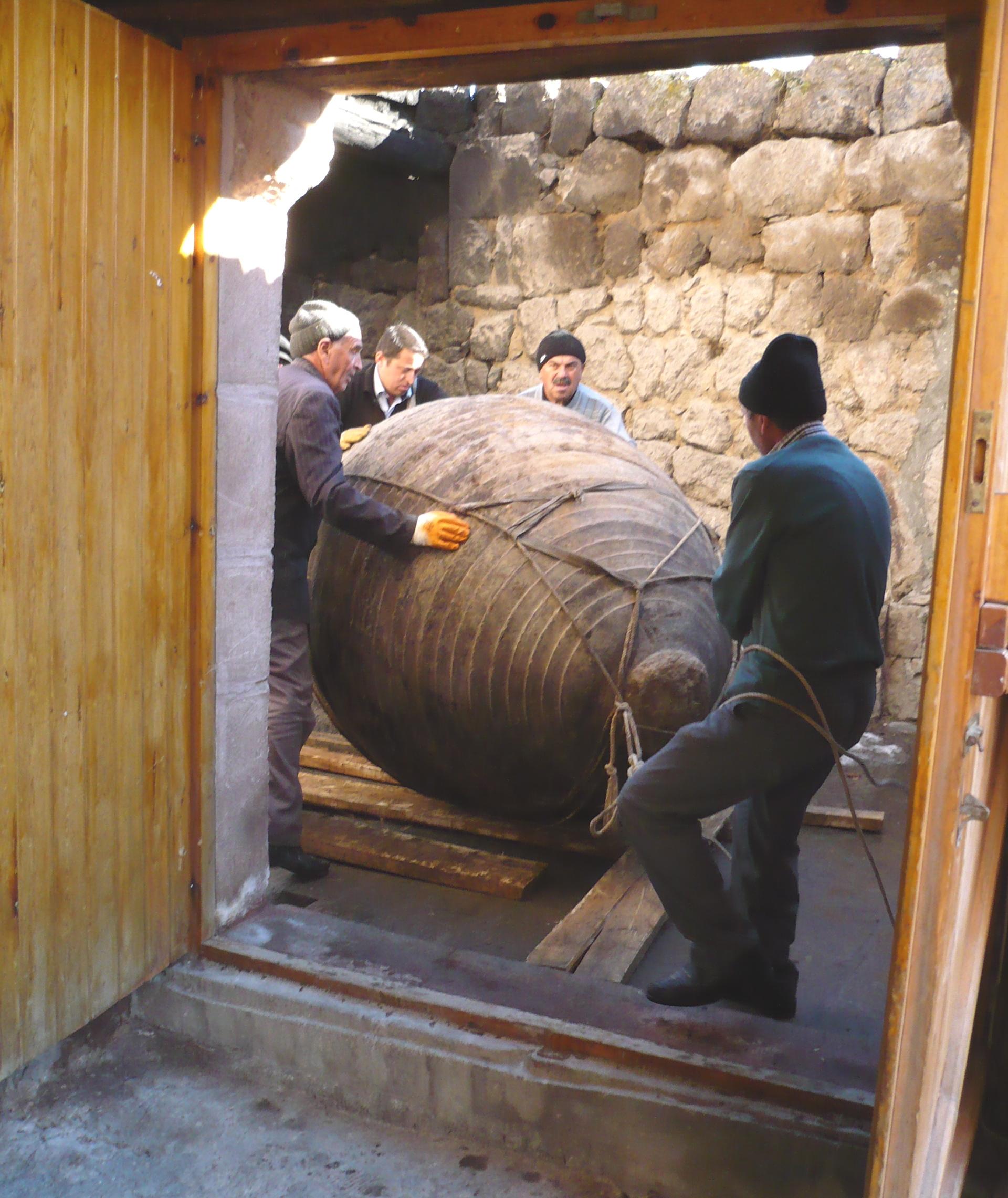
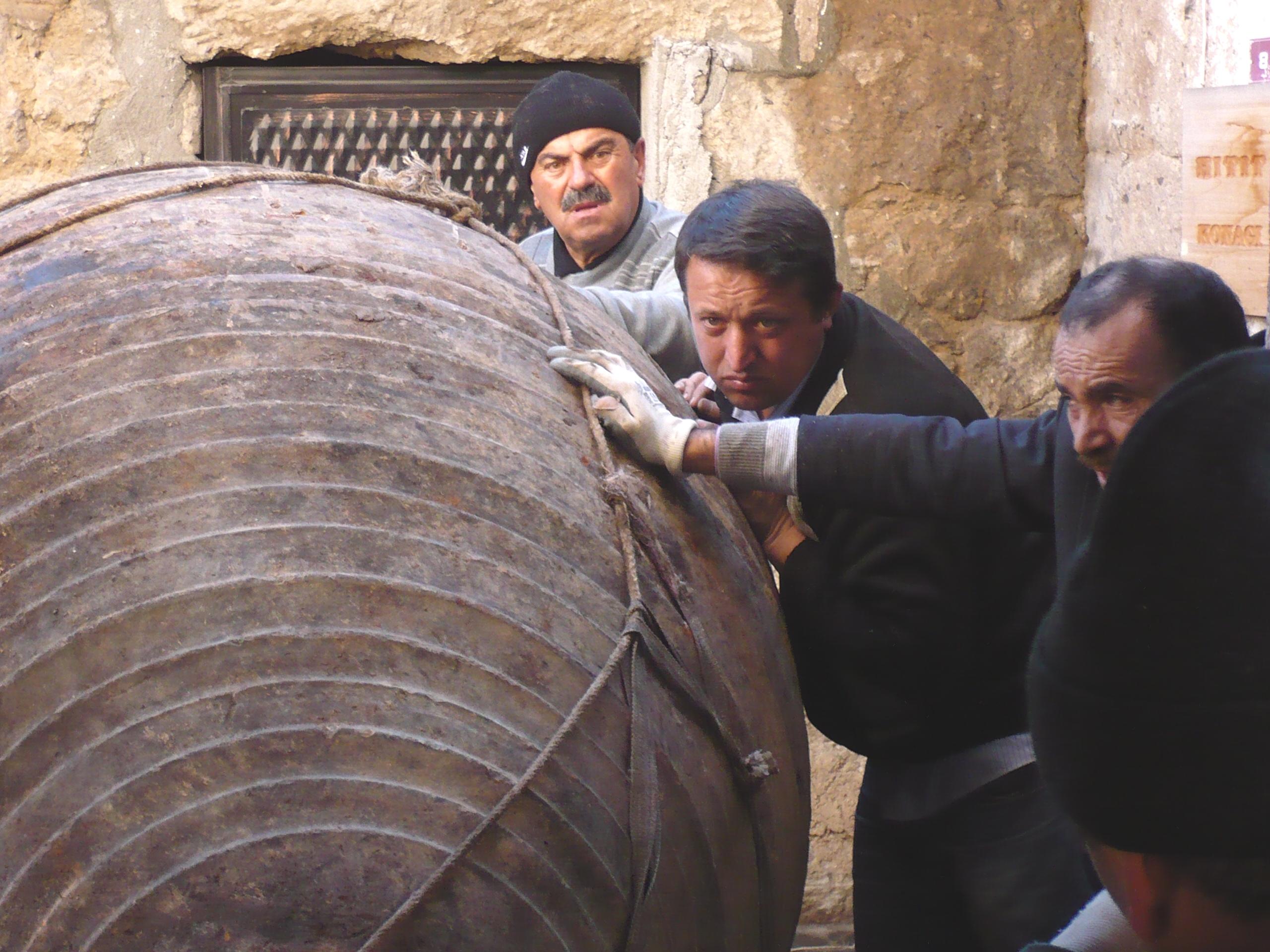
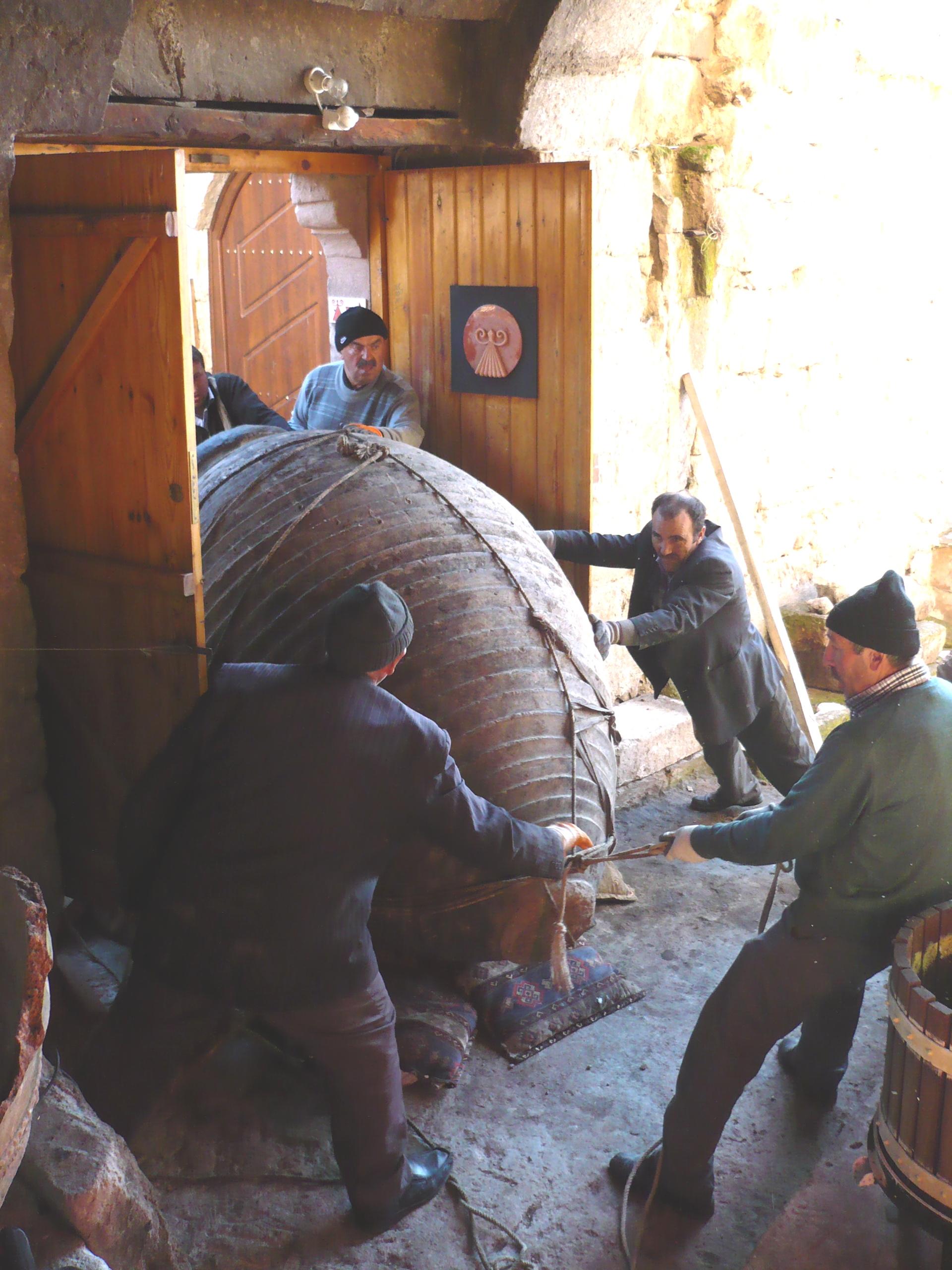
Daha sonra avlu kapısının yüksek eşiği başka bir meydan okumaya dönüştü.
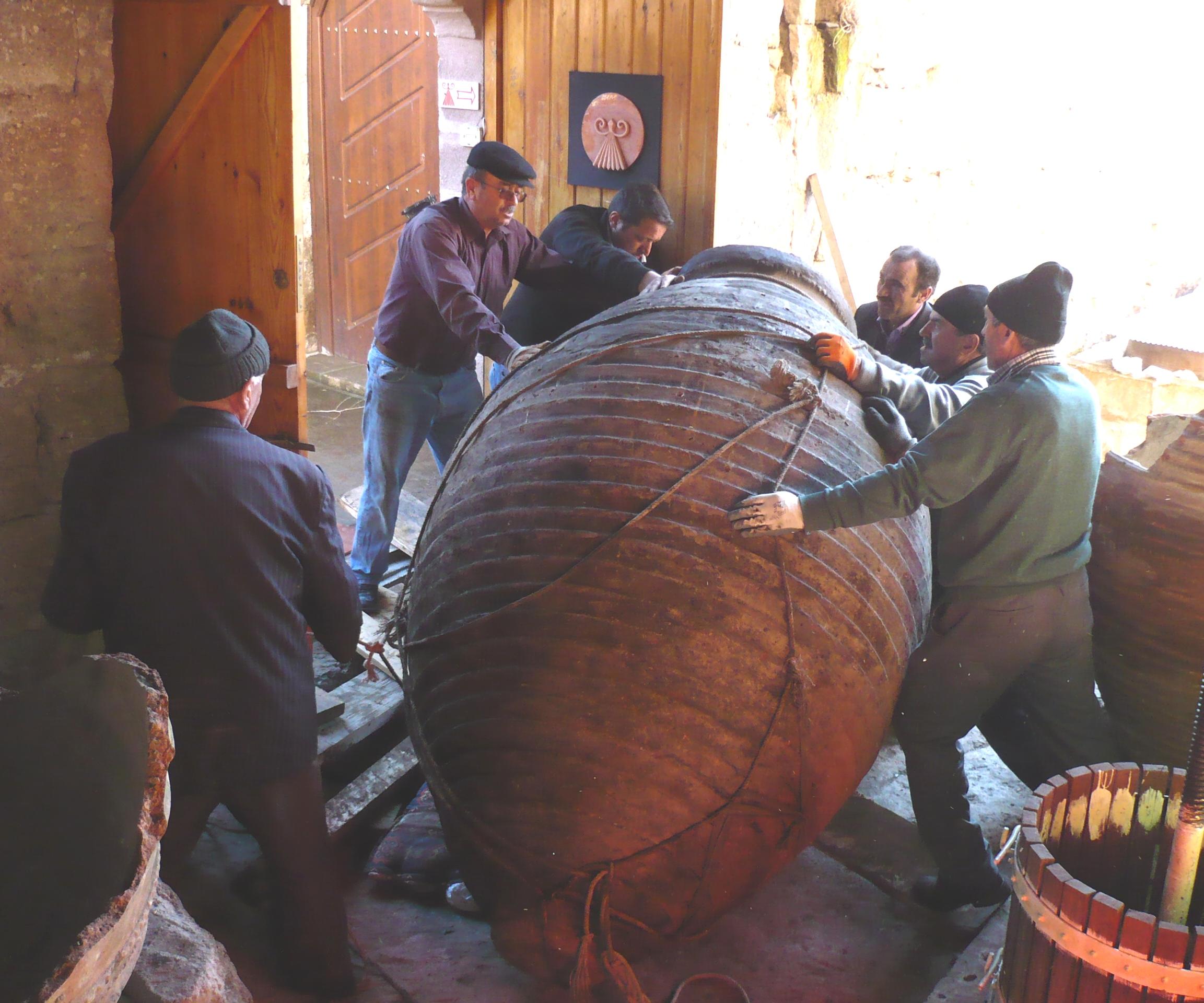
Küp nihayet bahçemize bağlandığında akşamüstü olmuştu.
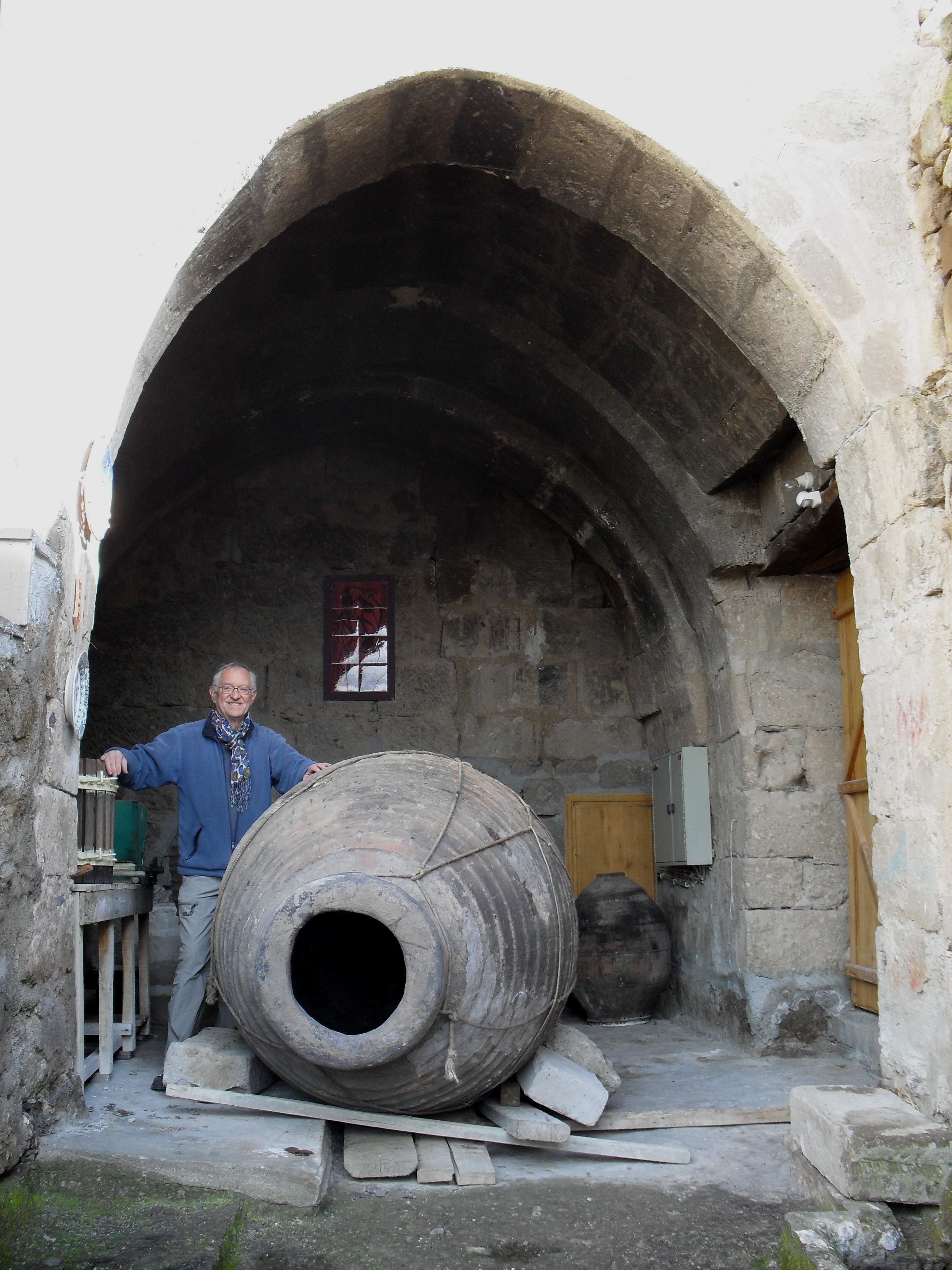
Zafer pozunda kısa bir fotoğraf ve ardından yatmaya hazır olun
Küp macerası bölüm 2
Ertesi sabah yedi adam küpü dikmeye çalışıyorduk.
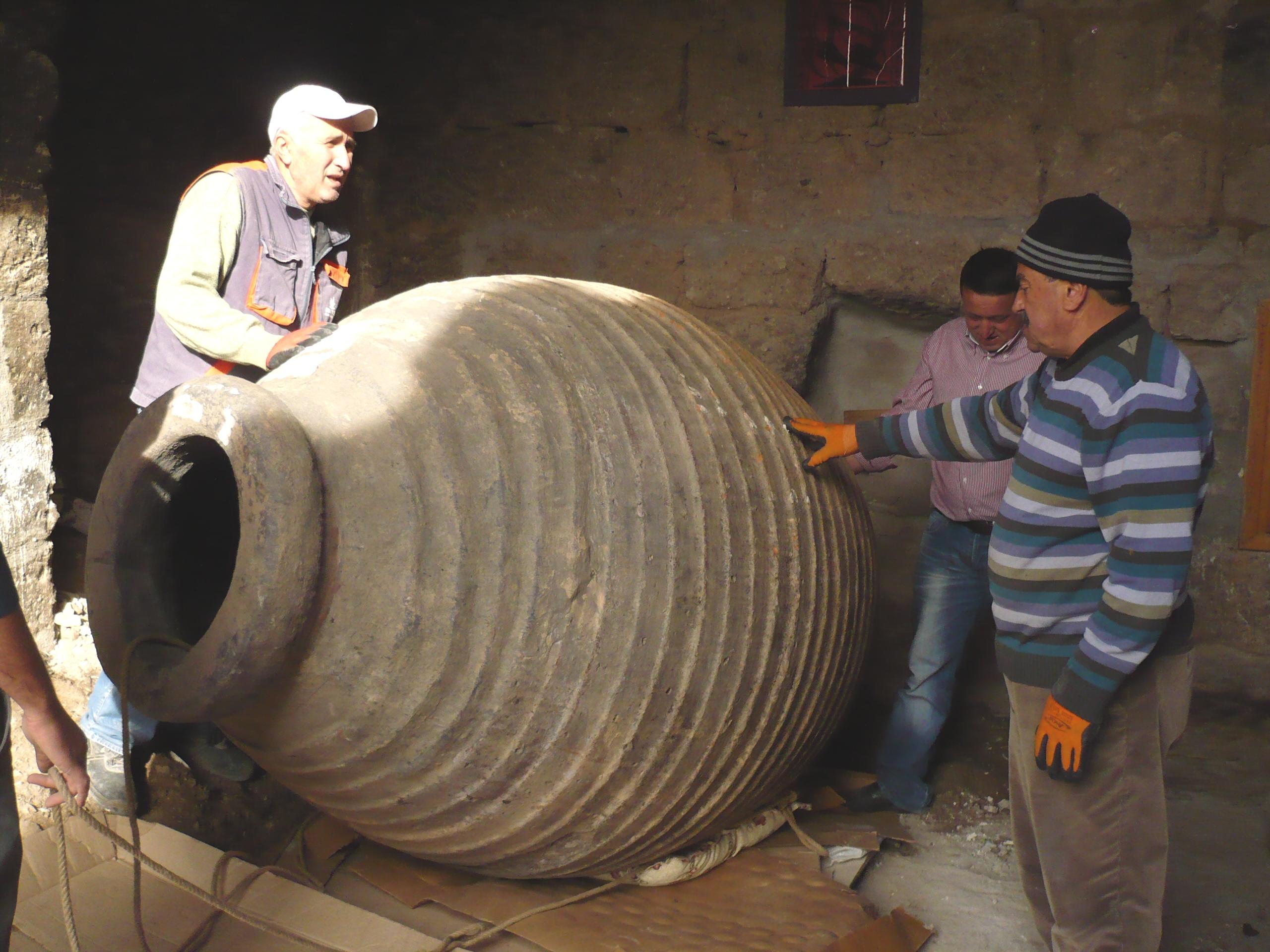
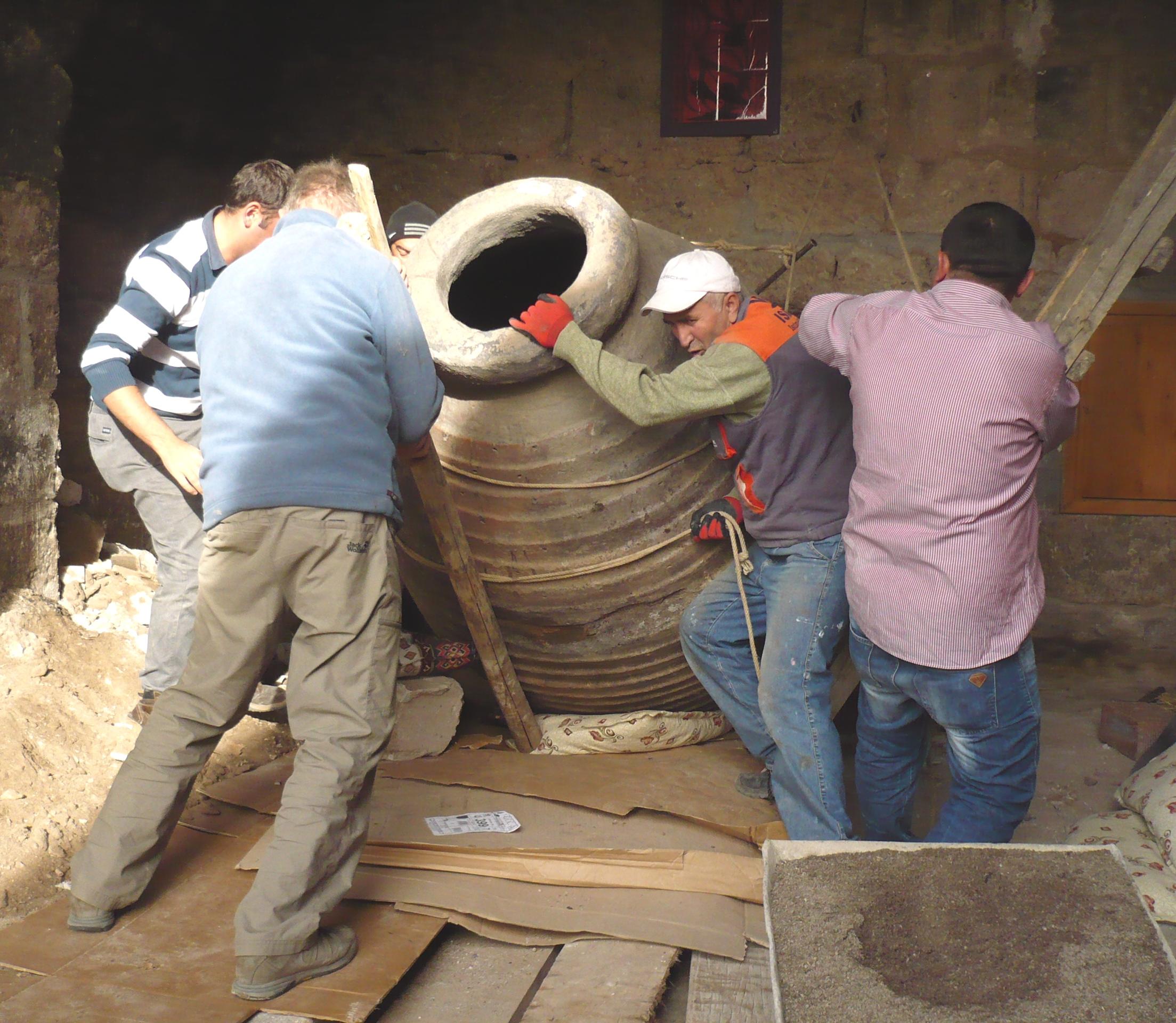
Yavaş yavaş kaldırılıyor…
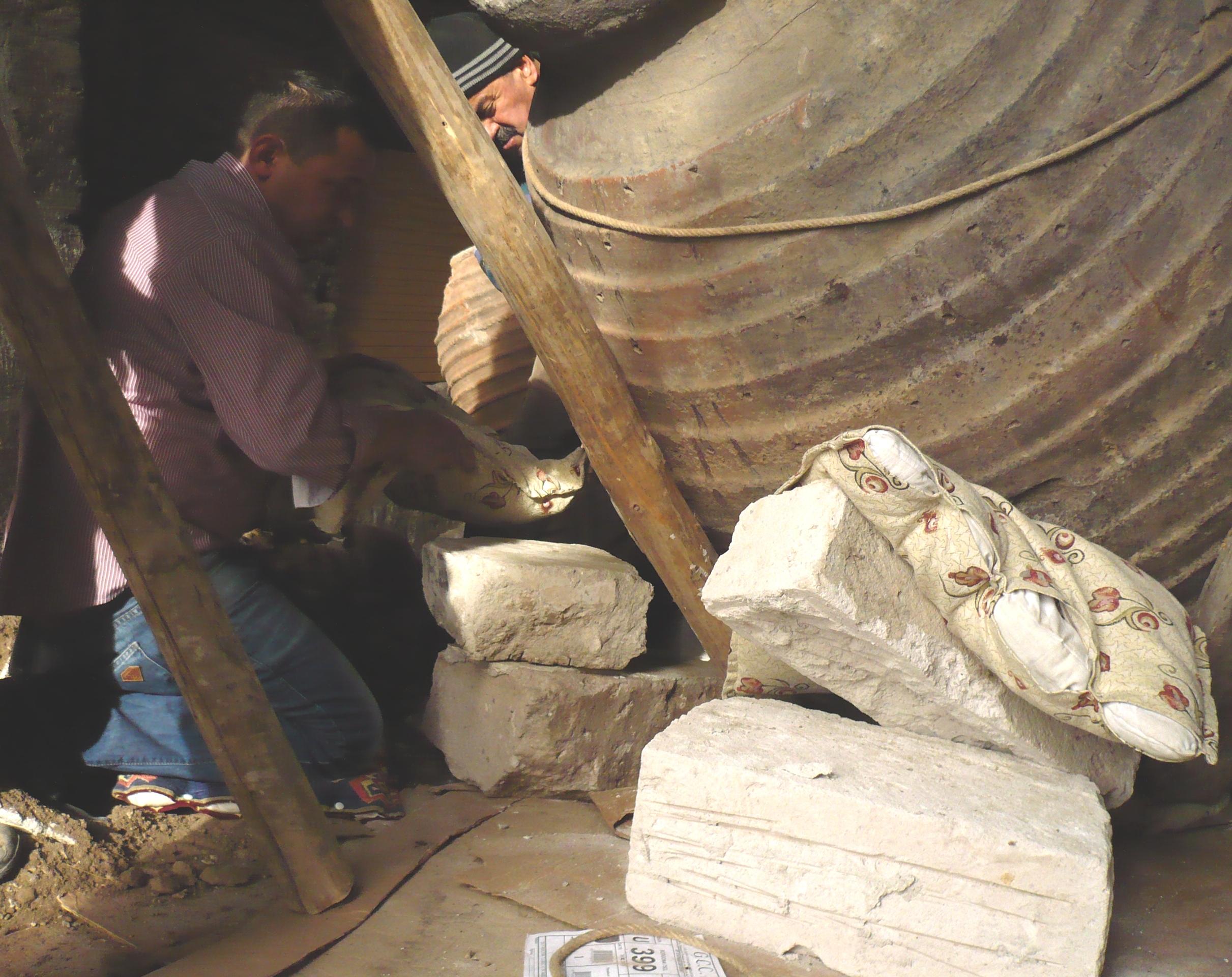
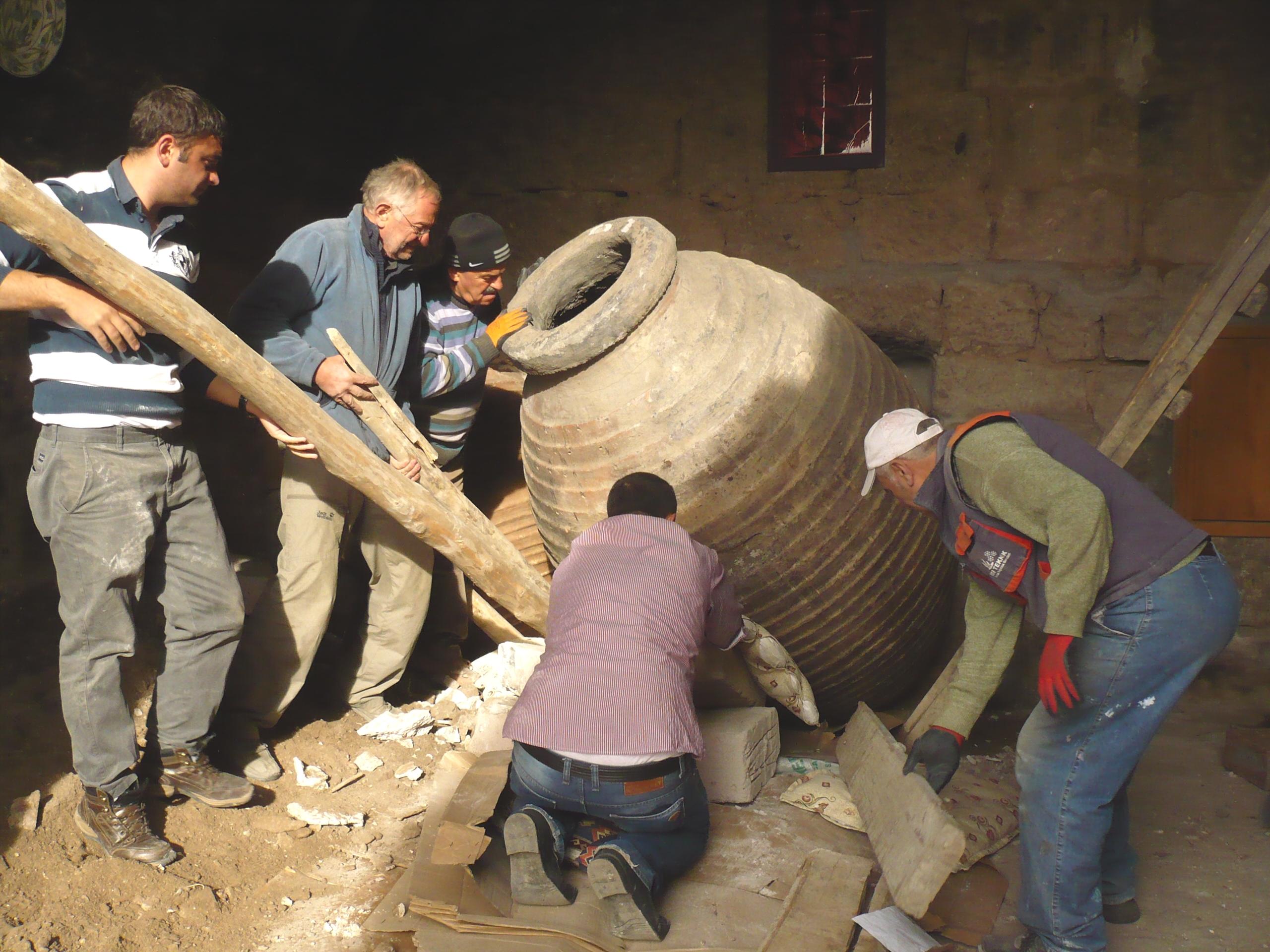
Küpün altına tuğlalar, minderler koymak….
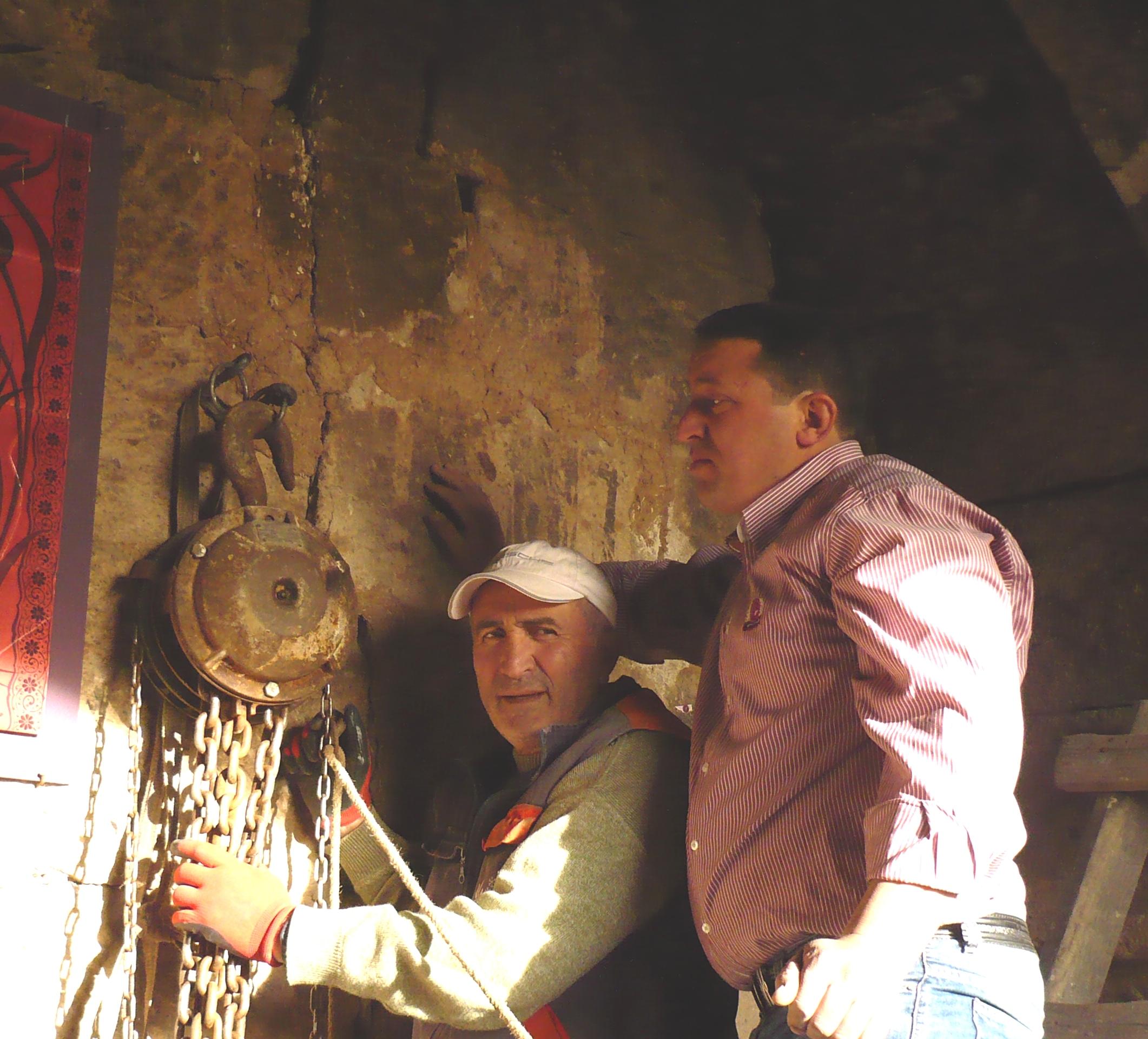
Öğleden sonra geç saatlerde, kırılmaması için önce duvara sıkıca tutturulması gereken bir vinç denedik. Ancak küp sürekli duvara doğru kayıyor ve “göbeği” buna engel olduğu için dikilemiyor. Sonunda montajı ertesi güne erteledik.
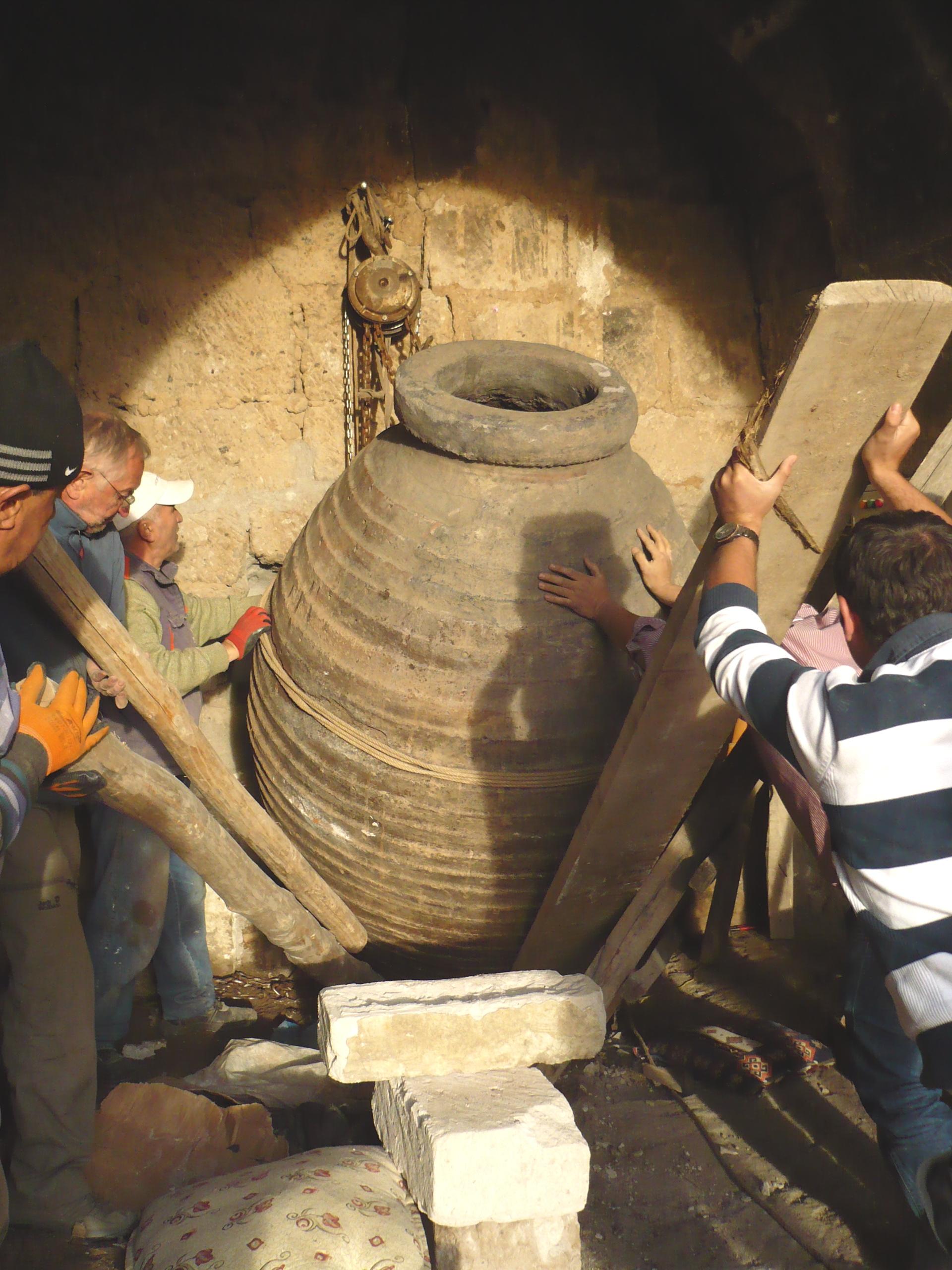
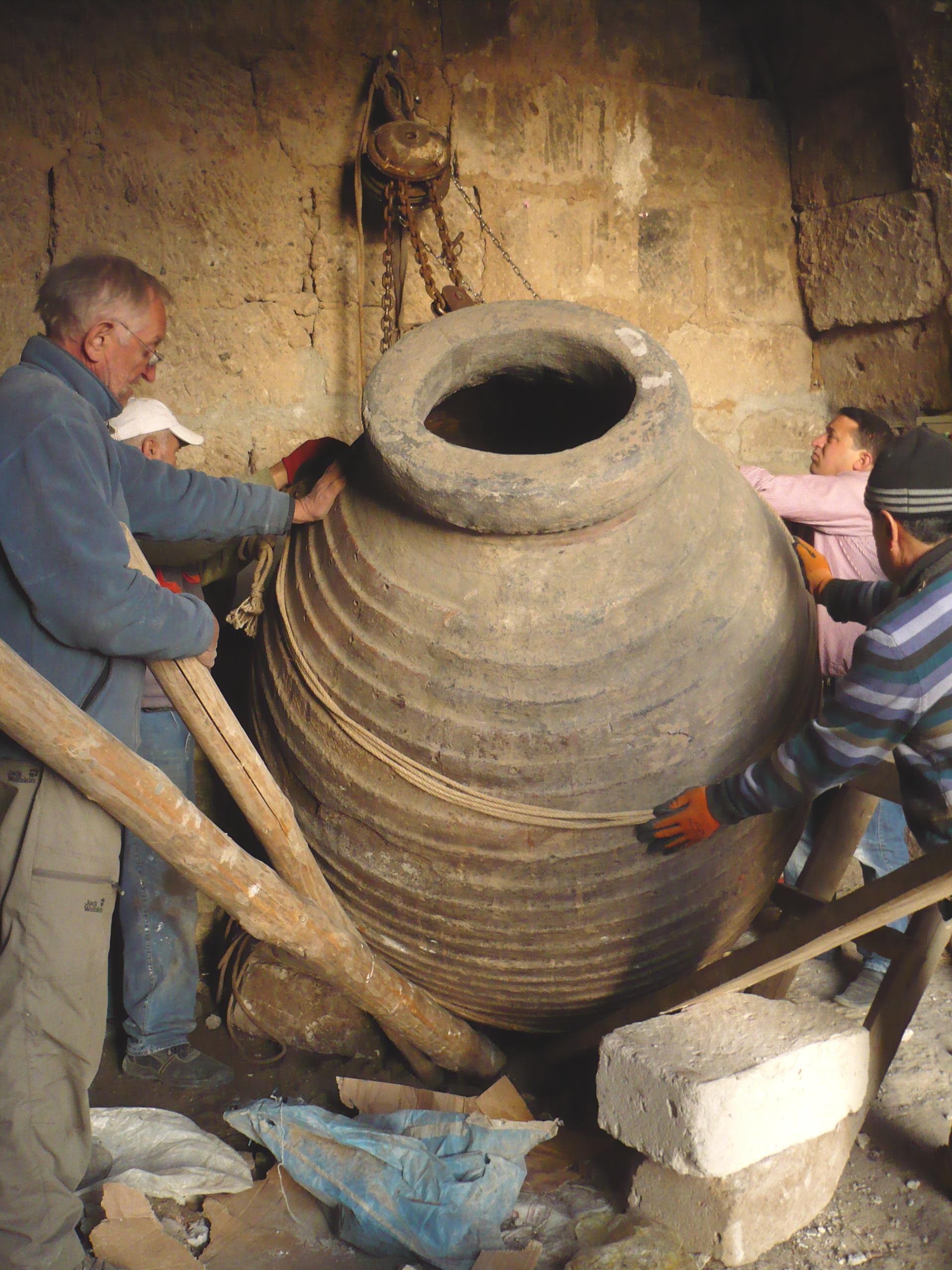
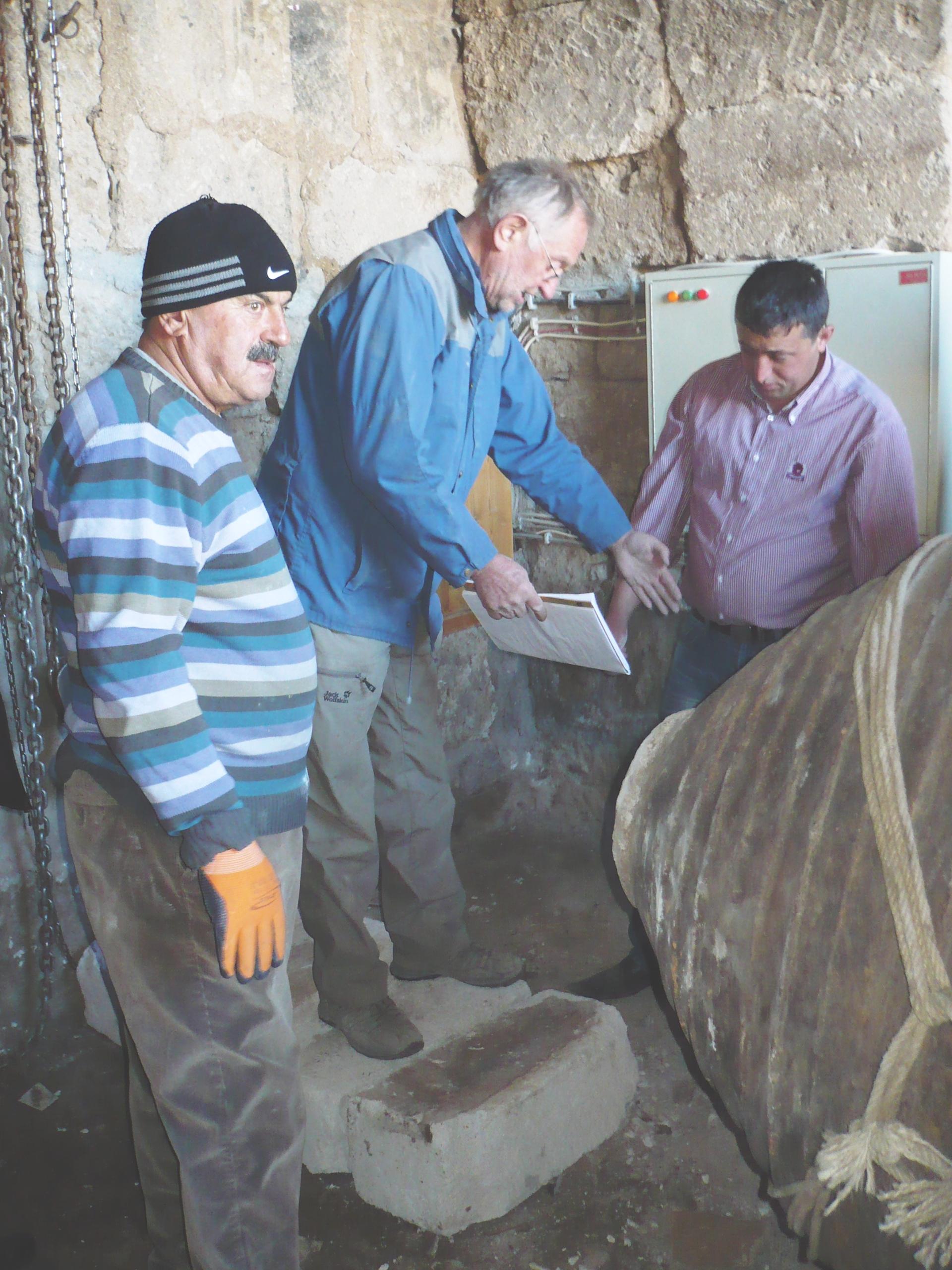 Sabah küpün duvara kaymasını önlemek için yere tuğlalardan bir dayanak yaptık.
Sabah küpün duvara kaymasını önlemek için yere tuğlalardan bir dayanak yaptık.
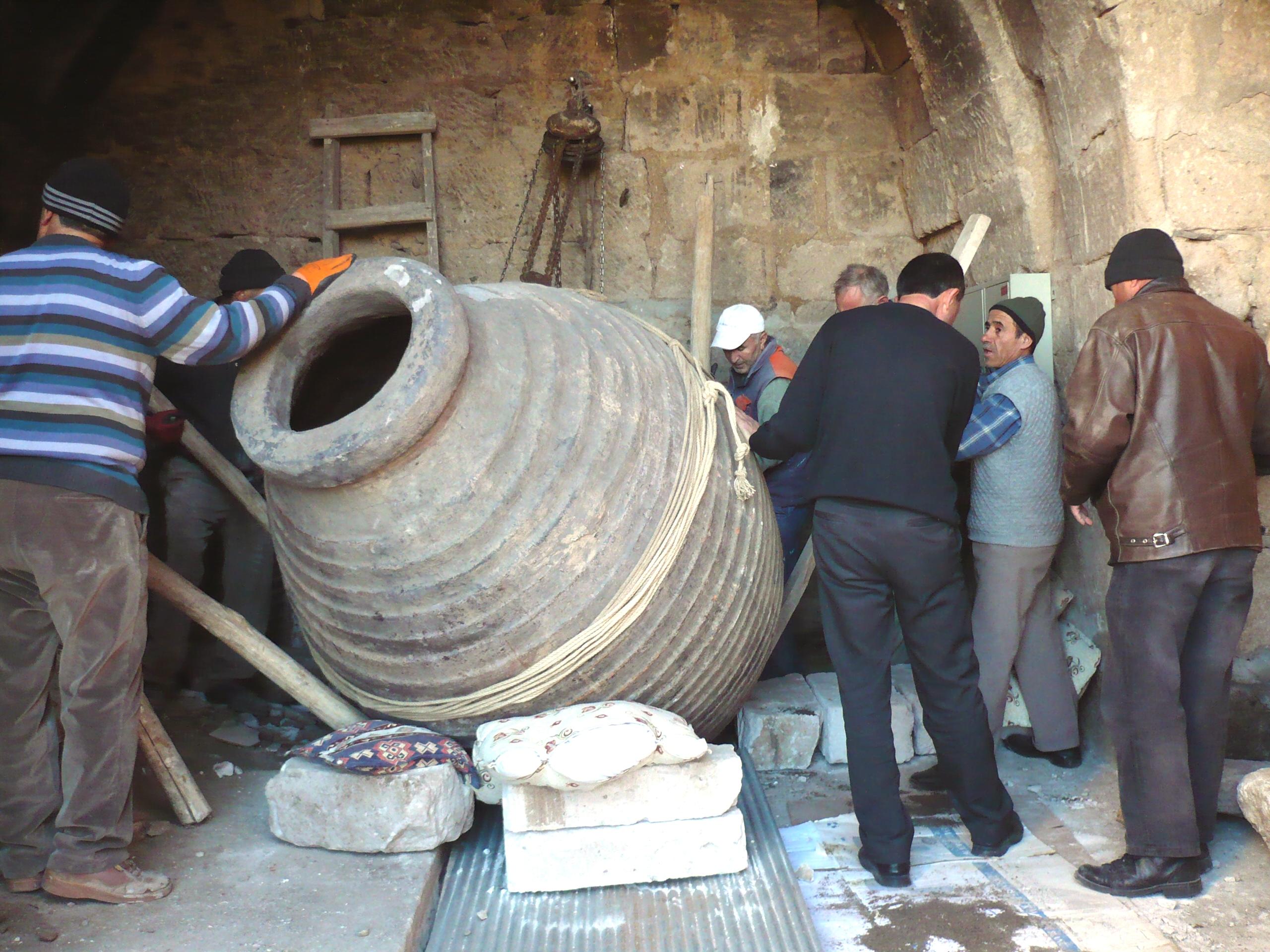
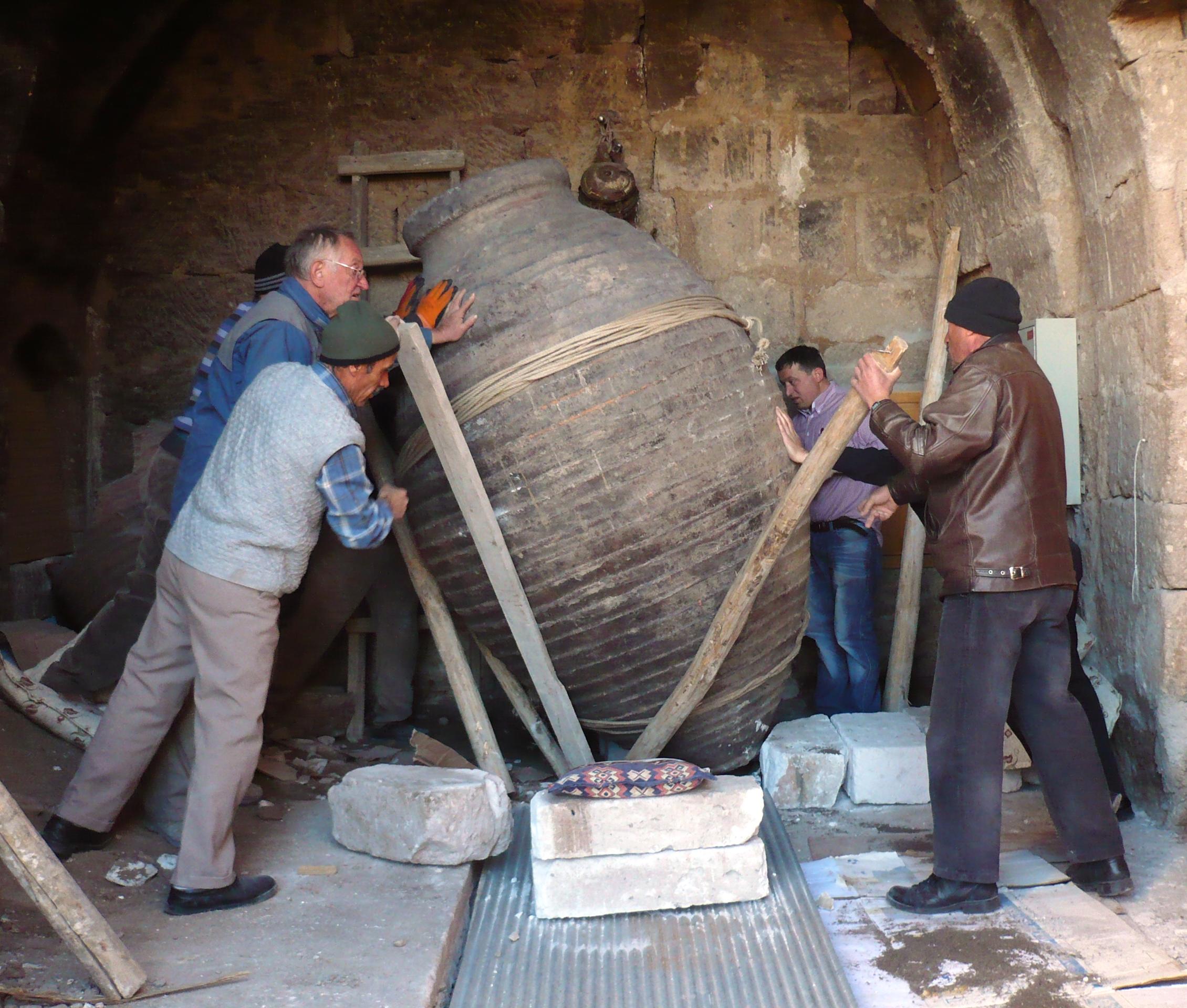
Şimdi sıra küpü yukarı çekmek, kalaslarla desteklemek, düzleştirmeye çalışmak. İşe yarıyor gibi görünüyor. Artık küp geriye doğru kayar, sola kayar, sağa doğru yuvarlanır ve sonunda dik durur. Yerinde tutun ve düzeltmek için altına taş itin…
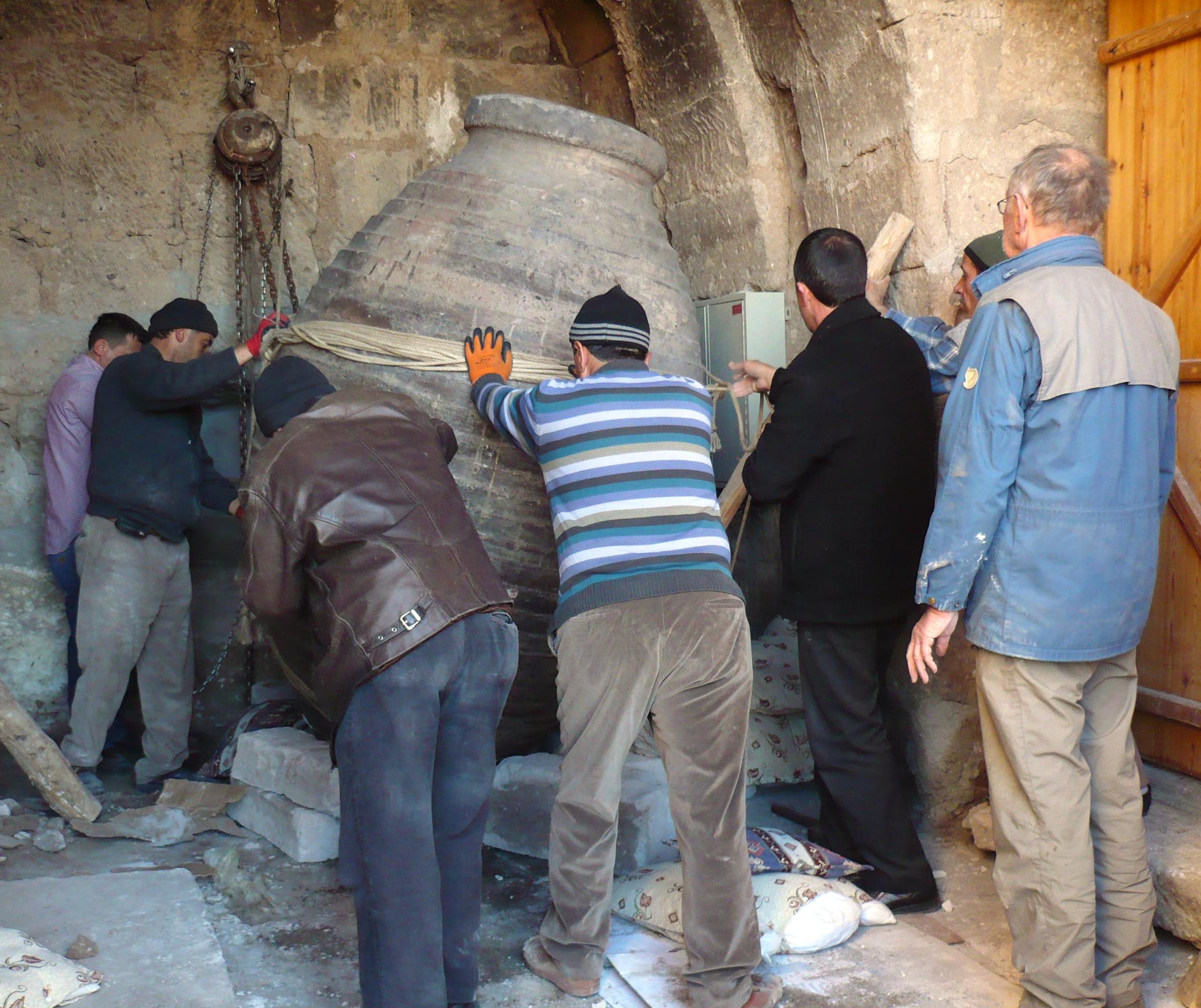
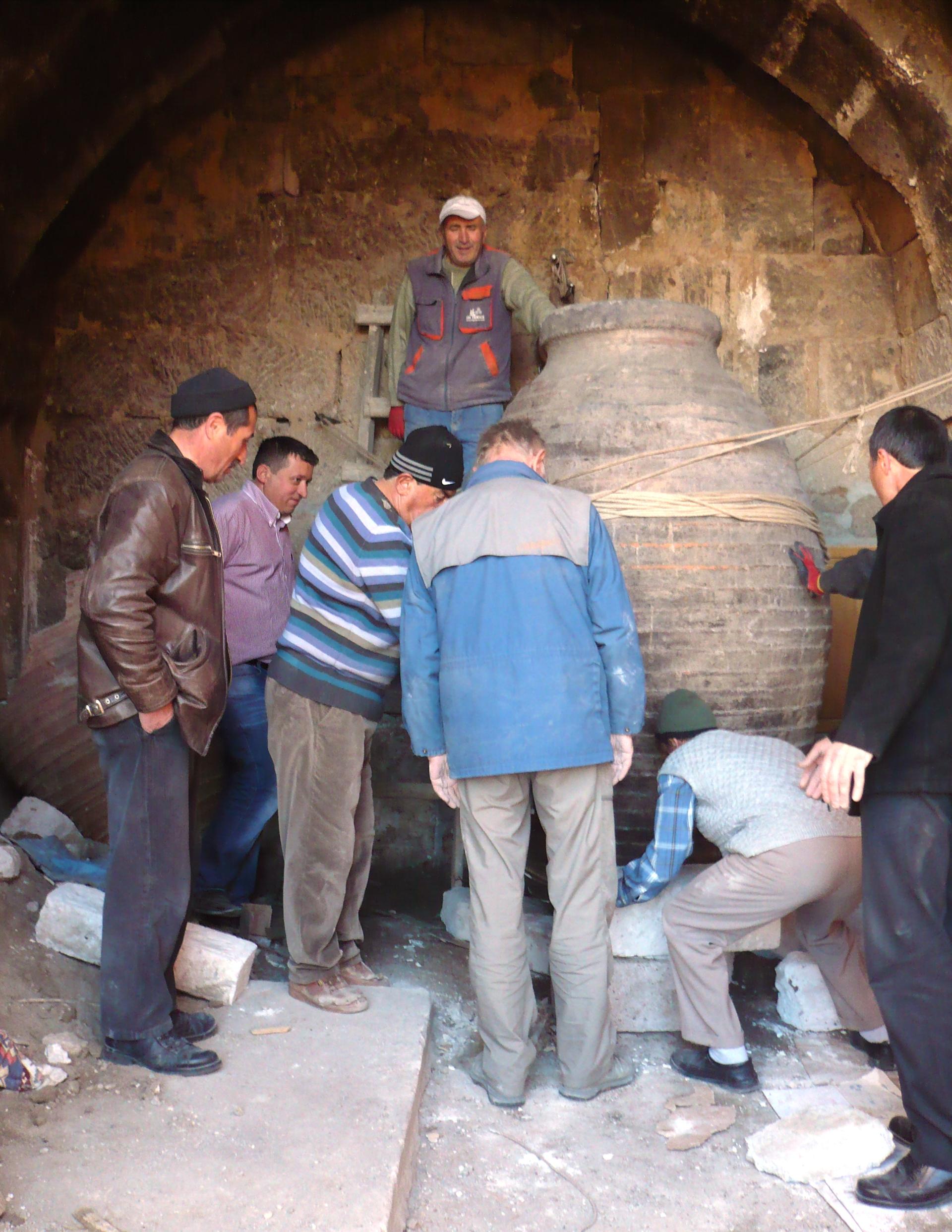
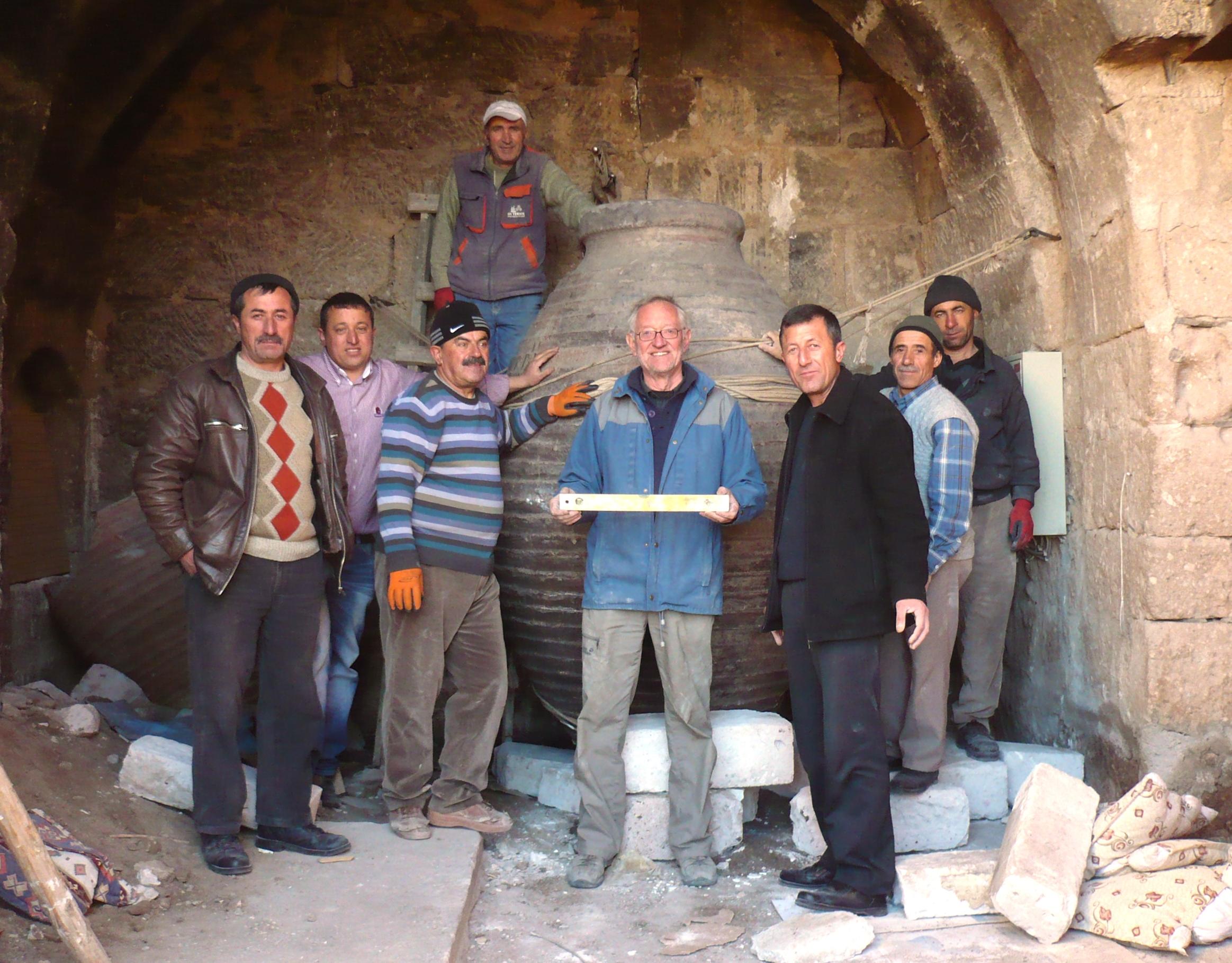
Bu, küpün son yatay konumunda çekilmiş bir fotoğrafıdır, ancak yardımcılardan küpü açıklığıyla aynı hizada konumlandırmalarını istediğimde ortaya çıkan anlaşmazlığın herhangi bir resmini göstermiyorum.
Kübün özenle restore edilmesinin ardından böyle görünüyor.
Artık 2000 l’lik kil fıçısı kullanıma hazırdır.
